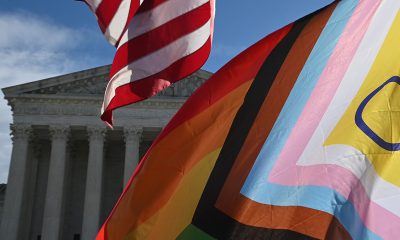Arts & Entertainment
Laughing with Lily
Tomlin on getting married, Ernestine and Edith, Lucy, Carol and more
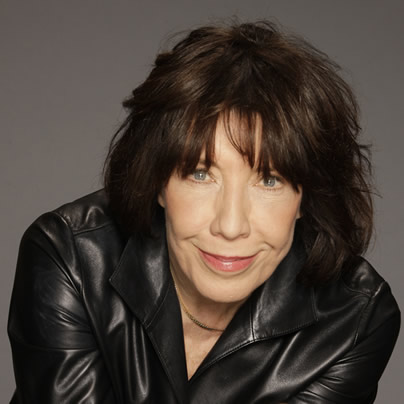
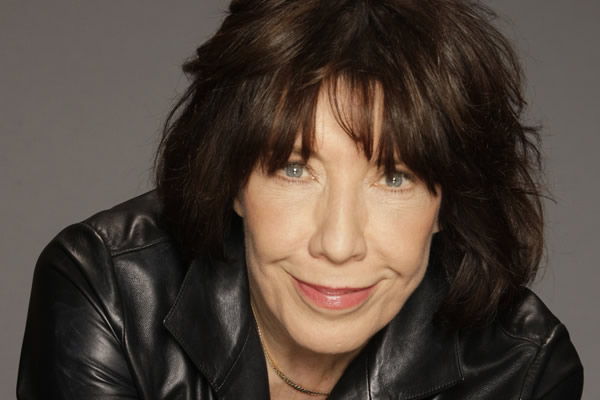
Lily Tomlin’s live show updates her classic characters with modern situations. (Photo by Greg Gorman)
Lily Tomlin
Music Center at Strathmore
5301 Tuckerman Lane
Mar. 28 at 8 p.m.
Comedic legend Lily Tomlin plays the Strathmore Friday night. Last week she spent a delightful hour with us by phone from her Los Angeles home in — as is typical for the actress — a leisurely, rambling-in the-best-way conversation that few stars of her caliber make time for. Her comments have been slightly edited for length.
WASHINGTON BLADE: How has comedy changed since you began? This show revives some classic characters and bits, but do you find some elements might have been a scream in the ‘60s but fall flat today?
LILY TOMLIN: I imagine you wouldn’t find a whole lot that would still be relevant. I couldn’t say that in a totally general way but overall, I would say the humor then would have been relative to something that was going on then. We didn’t deal so much with universal truths in the sense of the human condition. We did a lot of snappy stuff that was going on at the time. When we were doing “Laugh-In,” Ronald Reagan was the governor and later he was the president so a lot of stuff we said was just Reagan and you’d be watching “Laugh-In” on some cable show or something and they wouldn’t say governor or president, they just said Ronald Reagan or Reagan, so much of what we said still applied when he was president. But in general, the values and taboos of society have changed a lot in 40 years.
BLADE: Is it hard, then, to take your classic characters and make them work now on stage in a way that doesn’t feel frozen in time?
TOMLIN: Well, it’s just what you choose to put in their mouths. The last job Ernestine had was working for Health Care Insurance Corporation denying health care to everyone and prior to that she had a reality webcast chat show all during the Bush administration so she could call the president and presumably she had a webcam so she could see what he was doing. She could call Cheney or anybody and talk about something that was going on at the time.
BLADE: You don’t think Ernestine would still be funny at the switchboard?
TOMLIN: No because we hardly even have switchboards anymore and people barely know what an operator is. But that overbearing bureaucratic dominance still serves in other places. She left the phone company because they were no longer, you know, powerful or omnipotent. She would have had to compete for business.
BLADE: What would Ernestine think of the revelations last year that Big Brother is listening in on everything?
TOMLIN: I’ve been trying to come up with a really great NSA sketch. The secret of it would be (slipping into Ernestine’s voice): “A gracious hello — this is the NSA, the only government agency that actually listens (snorts).”
BLADE: I’ve seen you use her in unscripted formats, too. I remember Ernestine being interviewed once by Joan Rivers. I have no idea if she gave you the questions ahead of time or not, but that would seem quite nerve-wracking to me — the pressure to be funny outside of the sketch format. Was it?
TOMLIN: Well, I know her attitude. It’s not like Ernestine doesn’t live somewhere in my body, she does. Certain characters are especially good for that if they’re really opinionated and fairly short sighted or self interested and don’t care about other people’s feelings. Then they probably improvise fairly well.
BLADE: There was an op-ed shortly after you got married in which a lesbian wrote “we came of age in a time when her one-woman shows changed how we understood ourselves as lesbians and feminists.” To what degree in the ‘70s were you aware or were you aware that your work was not just being enjoyed by lesbians but sort of exalted and claimed in a sense?
TOMLIN: Maybe claimed a little. My mother and dad are from Kentucky and even though I was born in Detroit, because I’m well known and presumably semi-liked in Kentucky, I don’t know for sure, but Kentucky sort of claims me in a way. Very often I read that I was “Kentucky’s own” or “born in Kentucky.” In fact, I put my hands in cement there in some Kentucky hall of fame or something. I told them, “But I’m not really from Kentucky,” and they said, “No one will care. They’ll be glad and they’ll hope you are from Kentucky.” So I’m sure lesbians and other feminists, if I was good and doing good stuff and strong and intelligent, I’d think they’d want to claim me in a sense that, well, you know, “She’s one of us” or whatever people might say in that kind of reference. I’m sure even Mrs. Duggar, if she had one kid that became president of the United States, she might single him out. In any other case, she might not. “These are my kids. Oh, this is Robert, my son, the president.” I don’t know how that stuff goes but even if it did, I’m grateful for it in a sense because, you know, I want to communicate with people. Very often I really want to validate people, validate humanity to some extent. We’re so invalidated in so many other ways and disregarded. Dismissed or thought of as just some lump mass of humanity that’s disposable and exploitable. Rotten to the core.
BLADE: How does comedy validate?
TOMLIN: Just showing what you love and human situations and human attitudes and you show the bad parts, but you show them in a way that we all possess them. We’re all really in the same spaceship together. Politicians, to me, are a separate entity because they’re in a place where they’re actually affecting our lives in profound ways and attempting to do so and not always with the absolute soul of integrity.
BLADE: I found (partner) Jane’s (Wagner) blog a few years ago quite funny when she wrote the blow-by-blow of trying to find the right hot dogs and sunscreen on the Fourth of July. If that was any indication of the interplay between the two of you on something as trivial as finding hot dogs, how on earth did you discuss and settle on when, how or if to get married? (Tomlin and Wagner were married on New Year’s Eve after 42 years together.)
TOMLIN: We didn’t talk about it for a long time because we lived together so long where that wasn’t even a glimmer of a hope or a possibility. … She and I would have liked to have been married and last fall, maybe October or November or something, I said, “You know, maybe we should.” We were both of the same mind … so we just decided to get married. I don’t know if you’ve been on our Facebook, but we made a little thing about it and showed where we went to the license bureau and we just wanted a nice, simple, sweet, quiet little ceremony so we went to Van Nuys, we went out of the way because we didn’t want to be usurped, our control of the situation, you know, “Oh, Jane and Lily were at the license bureau.” But there was so much there, that we made this little vignette of it and it shows us in front of the building. It’s just this old, one-story kind of flat motor vehicle kind-of place. There’s nothing grand or majestic about it, like some old courthouse from another era or anything. And then you stand in line with a bunch of other people and there were young people in tuxedos and bridal dresses. Then you go in another room and this woman who looks like Ruth Bader she has on a black cloak, and she takes them in there and marries them right on the spot. Families were there and they’re so dear. These couples getting married, and you think, “Oh God, help us, all these young kids getting married and you don’t even —,” you know, I worry about them like a mother. Do they have a place to live, any kind of a decent job, are they gonna have kids, and they don’t have any idea what it takes to raise those kids, the money it costs. So we get up to the window and we get our license and then we go outside and there was a hot dog stand with a little cart and a multi-colored umbrella, so we used that as our backdrop. It’s just like four little photos. Now you’re gonna go and expect like a feature film or something, but it was just our little way to acknowledge it. We didn’t post it till after we got married, which we did on New Year’s Eve.
BLADE: Does it feel any different? Was there any psychological shift or anything you weren’t expecting?
TOMLIN: I haven’t perceived it. Maybe there is, kind of. The nice part about it is that it’s out in the public. Not that that many people would have known we were together anyway, but when it’s reported that you’re married, it’s so kind of official. The best part is that Jane is from Tennessee and my parents are from Kentucky so we have southern families and my family more than hers were more fundamentalist …
BLADE: You were raised Southern Baptist, right?
TOMLIN: Well, my dad wasn’t really. He was a drinker and a gambler and I went to the bookie joints with him and every Sunday when I was a kid, because of all the fire and brimstone that goes on in the fundamentalist church, I would sit up in the kitchen with my dad. We had an old Formica table and I was maybe 5 or 6 or 7 and I was worried about my father not going to heaven. My dad would be having a beer and some sardines and crackers like on a Sunday morning and my mother is getting ready for church and I’d be up there in the middle of the table trying to get daddy to go to church with us. Argh. Anyway, my mother and dad are both totally individual and funny … so I would go to the bookie joints with my dad on Saturdays and to church with my mom on Sundays. Let’s see, where was I going with this — the best part of the marriage thing, aside from us being together, was that we heard from a lot of relatives, not my mother’s generation really, ‘cause they’re mostly gone, they would have been a little taken aback, but the next generation, we got lots of cards and messages from relatives that you never would have gotten even 10 years ago, congratulating us. Very loving, very sweet. So I thought that was the most miraculous part of it.
BLADE: You were on the “Merv Griffin Show” several times early in your career. Did you have any awareness at the time that he was gay?
TOMLIN: No, I don’t think so. Well, by the time I was in my 20s, I suppose I did. There were these rumors that young men were always kind of in his sphere somewhere so yes, I heard all that kind of gossip, especially being gay, other gay people fostered that kind of gossip. They were glad to hear about something like that. So yes, it was probably fairly well considered and I’m sure I was privy to that conversation at some point.
BLADE: I know the story about the Time magazine offer (in 1975, they offered her the cover if she’d come out) but then years later, like maybe in the late ‘80s or ‘90s you were doing stuff like “Celluloid Closet,” “The Band Played On” and “Will & Grace.” Was there a point where you decided to start saying yes to those kinds of projects that you might not have done, say, a decade before?
TOMLIN: I never would have said no to them but I might not have called a press conference to declare my sexuality. At that time, first of all, it gets to be a little bit grandstandy for someone like me. … I called Vito Russo and told him about the Time offer and said, “I just don’t know if I can handle it, I’m a little bit insulted, I’m a little bit everything,” because it was more like they just needed a gay person. It was like with the actor Cliff Gorman who was in “Boys in the Band,” he was straight but he was very worried about his career so whenever he gave an interview, he’s always make sure you knew he wasn’t gay. So we just flipped it around, you know, and when I did end up giving an interview to Time, we made sure they understood I wasn’t straight and we put a little bit about that on the album we were working on at the time, “Modern Scream.” And of course nothing was ever said about it, written about it, anything. The album wasn’t a big hit. It wasn’t like I was some big recording artist who sold a lot, but my early albums had been fairly successful because of “Laugh-In,” Ernestine and Edith. … I didn’t want to decline it, but I didn’t want to accept it, so I decided, “I’m not going down without throwing a punch.”
BLADE: Now at times, some up-and-comers use it in reverse — being out as part of their marketing campaign. For people who are genuinely talented, do you think that’s harmful?
TOMLIN: It depends on what kind of work they’ve done or they’re doing. Look at Neil Patrick Harris. He’s hugely popular and sought after, but of course, we knew him as a kid. But he’s a very good singer, actor, dancer and he’s got a lot of charm. Things have turned around so profoundly but the thing that terrifies you is if some right wing evangelist kind of person gets in, or we lose the Senate or we get a Republican president, you don’t know how far they will go to repeal something. There’s such a sense of celebration now and it’s kind of taken for granted but if some crazy person gets in there and there’s that limitation and philosophy where they spiritualize everything, they just nail down on these issues and they want to repeal any kind of progressive advance. It’s pretty scary when you see what’s going on in other parts of the world.

Lily Tomlin won the Mark Twain Prize for American Humor at the Kennedy Center in 2003. She’s in the region this weekend for a show at the Strathmore. (Photo by B. Patterson)
BLADE: Yeah, like what we saw in Russia during the Olympics.
TOMLIN: Right. We did a little thing — actually I wish we could have been in D.C. when we did it, but I say I was thrown in jail but thank God, I knew Ernestine and she got us out. So we make fun of it. We made a graphic where we show Putin bare-chested on a horse and Ernestine is riding bareback behind him.
BLADE: So your show isn’t just Lily’s greatest hits then.
TOMLIN: No.
BLADE: Do you enjoy working on the material?
TOMLIN: I do. We have some pieces that we still do that work well because I love them so much and I think they’re terribly funny. So it’s kind of a mix. We’re trying to do something worthwhile but that is also fun and hopefully thoughtful, hopefully even moving in some way at some point. How old are you?
BLADE: 39, but you know gay men often know pop culture before their time way more than straight men.
TOMLIN: Oh my God, yes. Paul, this photographer and musician who works with me, he kills me because there’s nothing that happens on a daily basis at our house, office or anything, that he can’t relate it to a Lucy episode.
BLADE: That’s a great quality to have.
TOMLIN: Oh, it’s so dear. I just scream laughing.
BLADE: What’s your favorite?
TOMLIN: Well, when I was a kid, “slowly I turn,” because it looked like the kind of performance piece I could do. The ballet class, too.
BLADE: You guested on “The Carol Burnett Show” right?
TOMLIN: Oh yeah.
BLADE: Lots of people are on sitcoms but you and Carol and a few others are known for certain characters. Did you feel comedic camaraderie with her?
TOMLIN: Well, I’d known her a long time. One very hot moment for me, one very happy moment, I was at CBS maybe I was doing my first special or maybe I was just guesting on some show like Glen Campbell or something. When I got “Laugh-In,” Glen Campbell was the first show I guested on and Carol, of course, shot at CBS. I was in the ladies’ room and she came in and threw her arms around me and called my name. That just made me very happy that she knew who I was and was so demonstrative with me. She’s an extremely dear person anyway.
BLADE: Did you know Lucille Ball?
TOMLIN: I read an article with her once and they were asking her about new young comedians, mostly girls, and when they got to me, she said, “I don’t get her.” My heart broke but later I met her and she told a very funny story, and acted it out for about 20 minutes, about how she had had to get a root canal the day of the Tonys. … To hear her tell it in person was just sublime.
BLADE: She seemed like she could be a bit of a tough customer. Crusty, maybe.
TOMLIN: Everybody says that, yeah.
BLADE: Maybe she felt more liberated as she got older. More candid. Do you ever feel that way?
TOMLIN: Not really. I have a hard time realizing I’m as old as I am. I don’t feel that old. I still feel innocent in some ways.

The Gay Men’s Chorus of Washington perform “The Holiday Show” at Lincoln Theatre (1215 U St., N.W.). Visit gmcw.org for tickets and showtimes.
(Washington Blade photos by Michael Key)
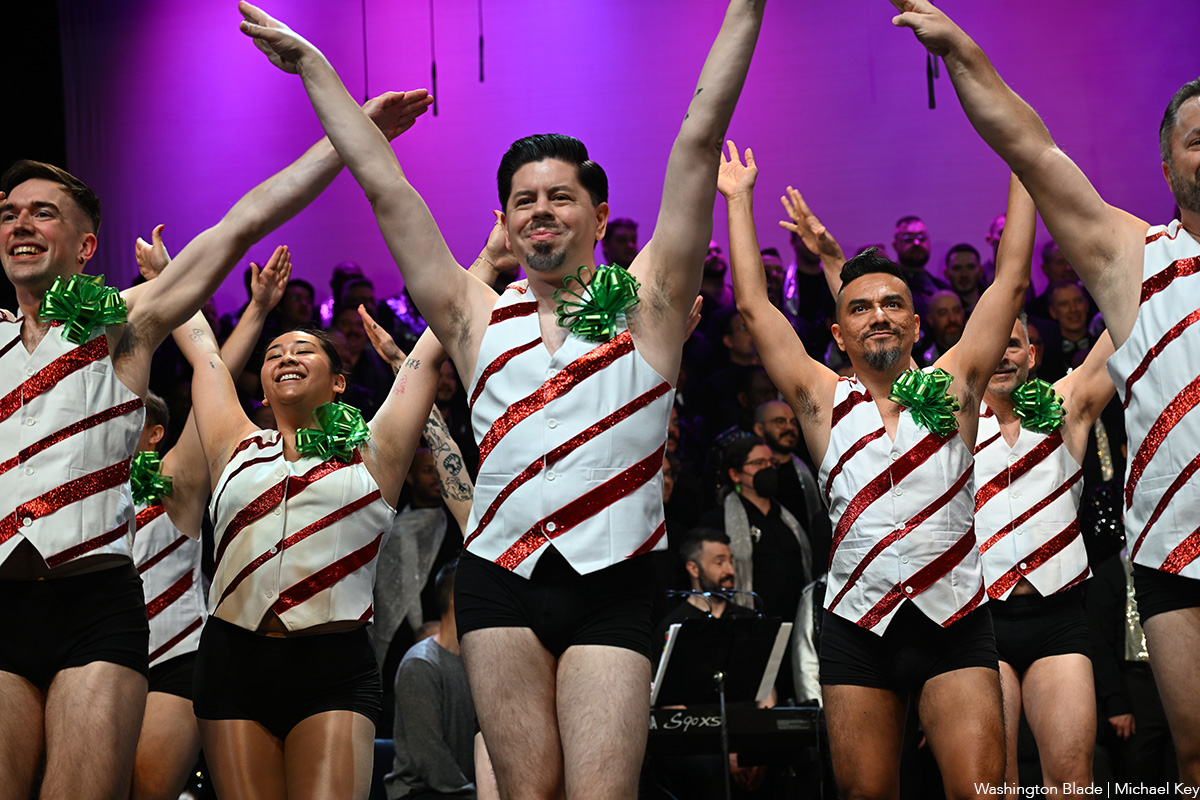


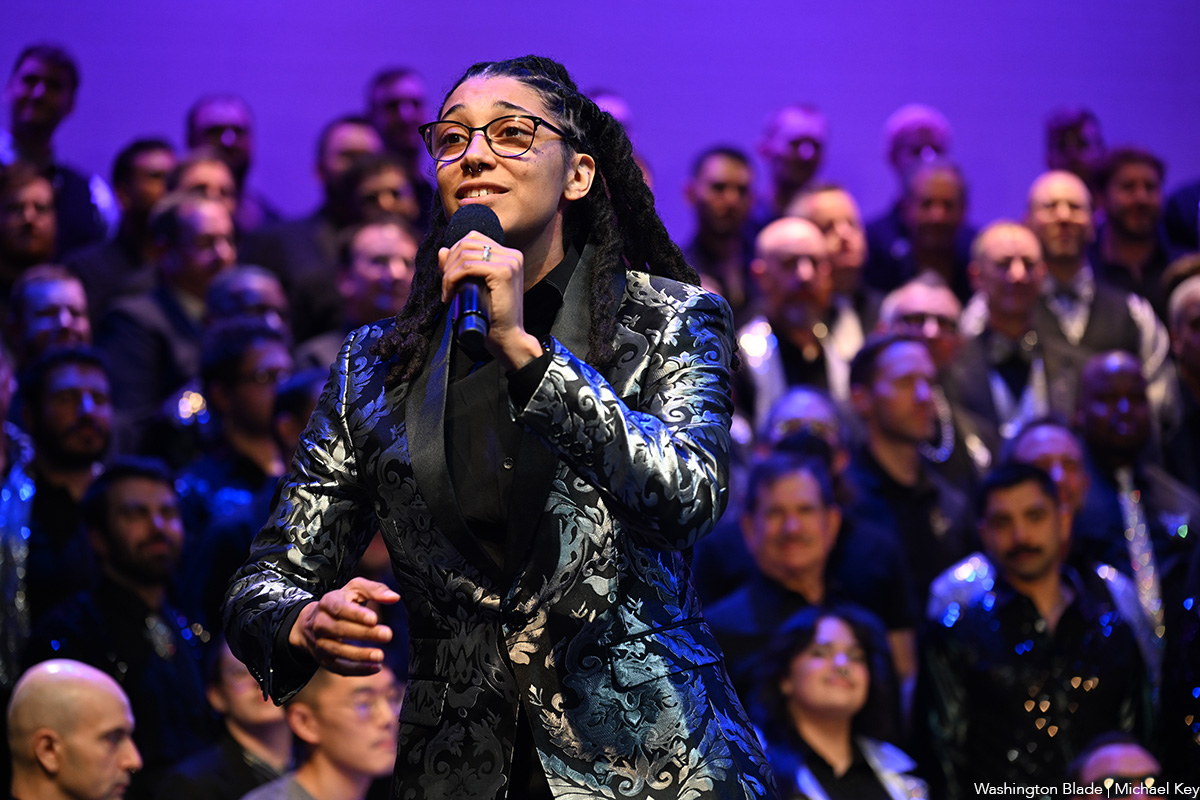
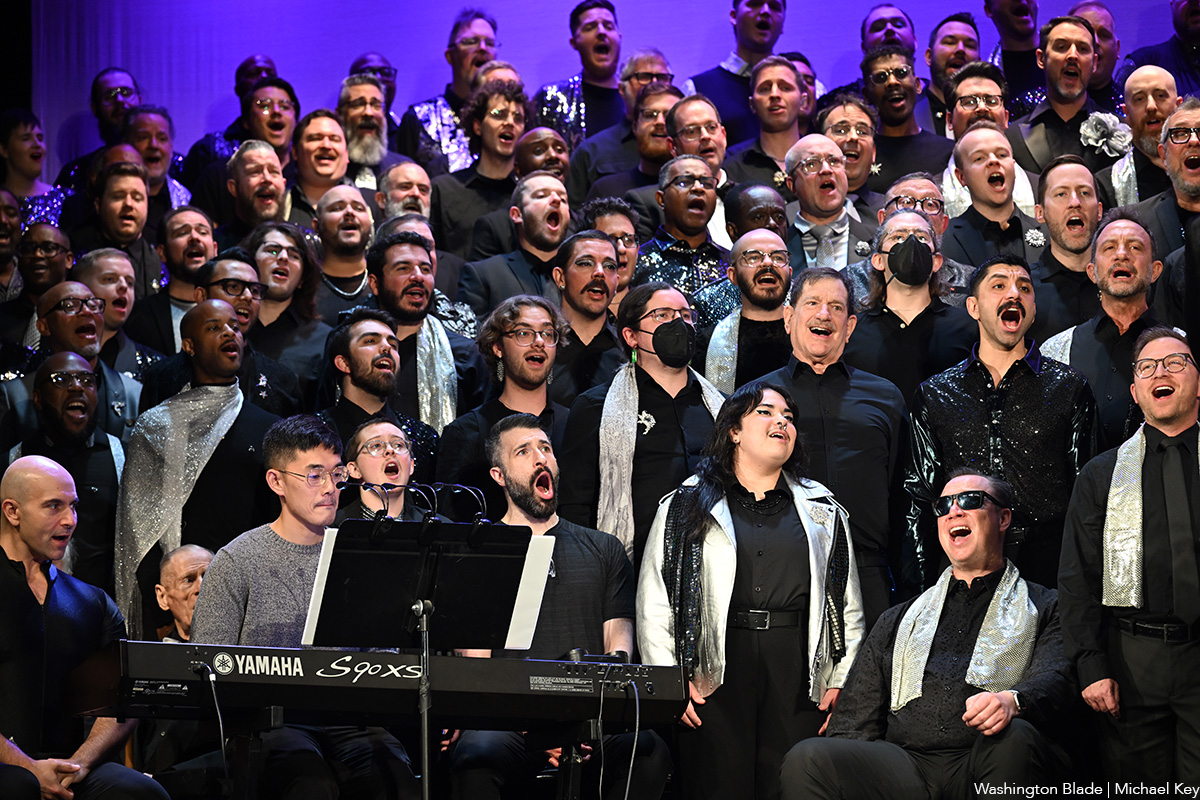






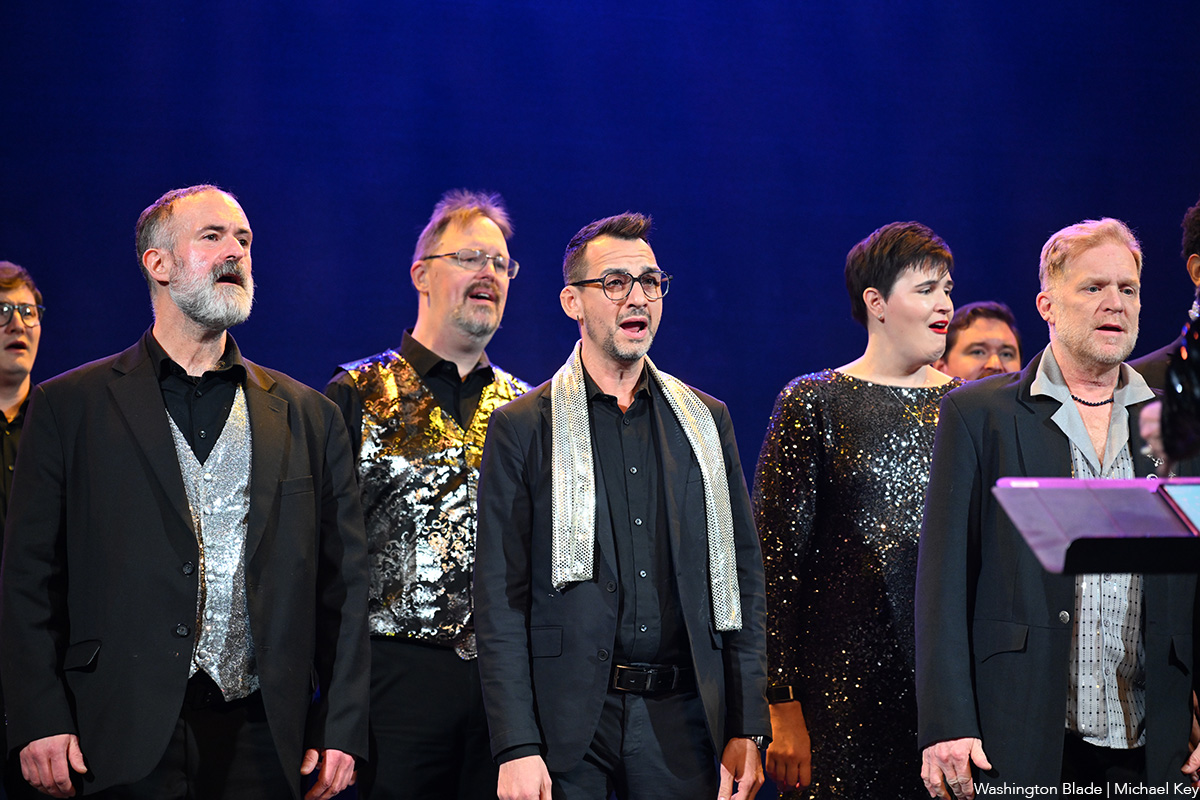
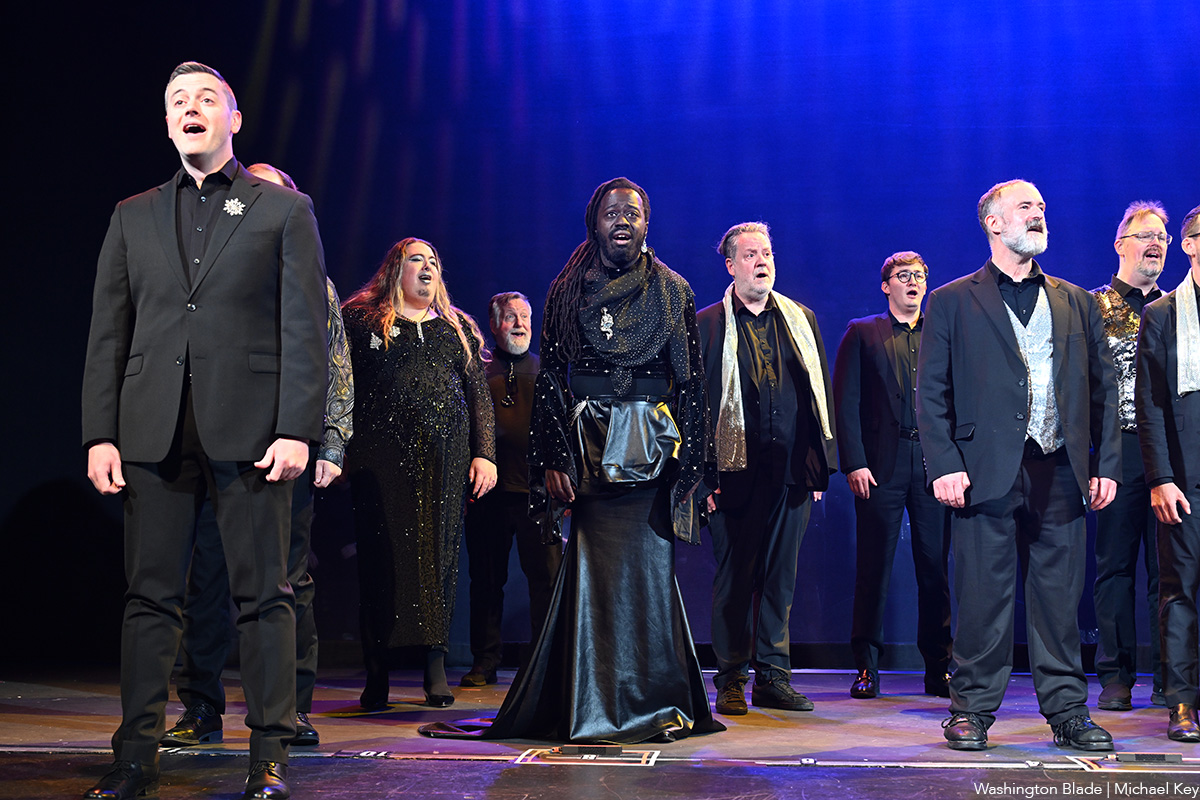
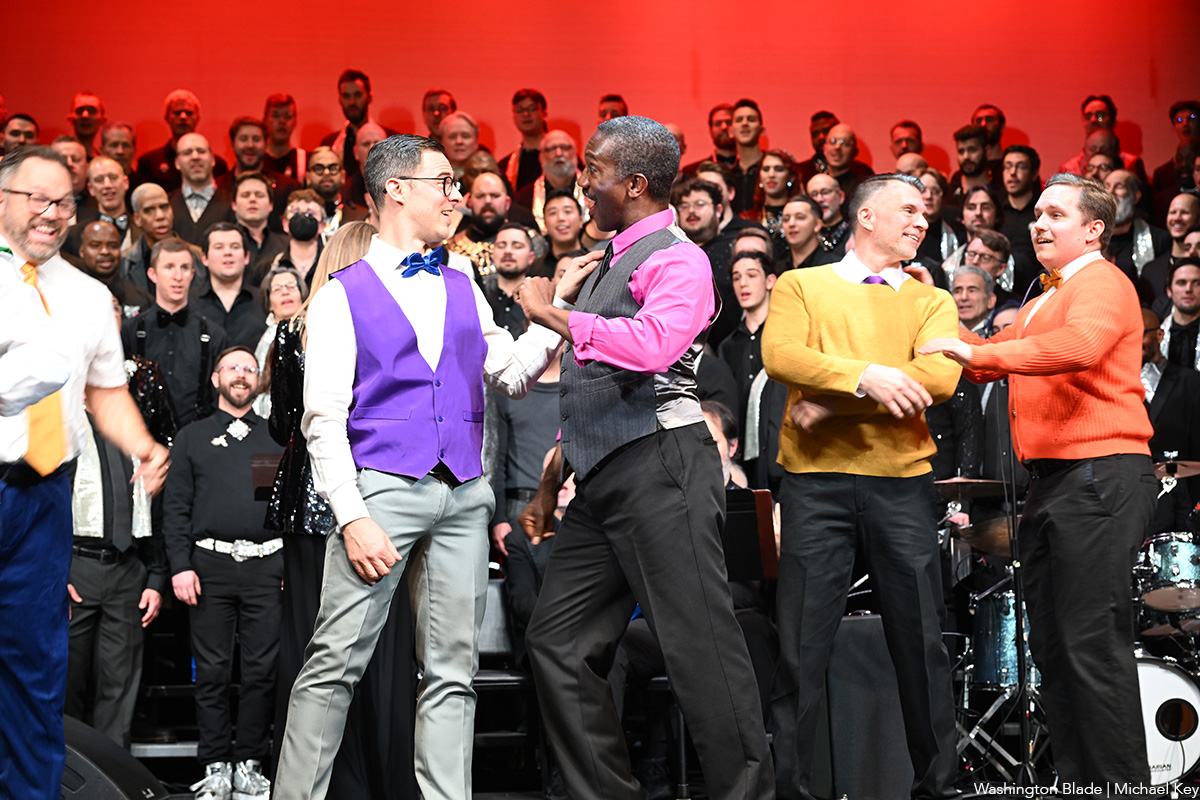
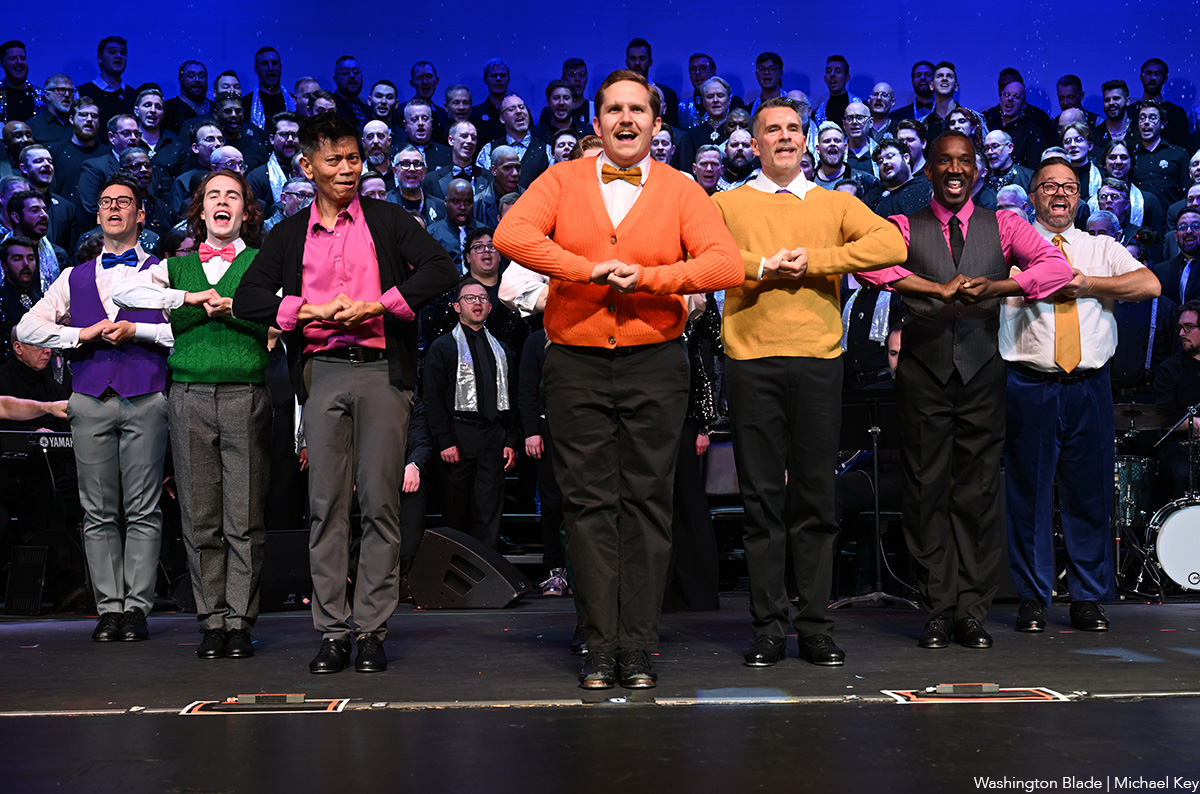

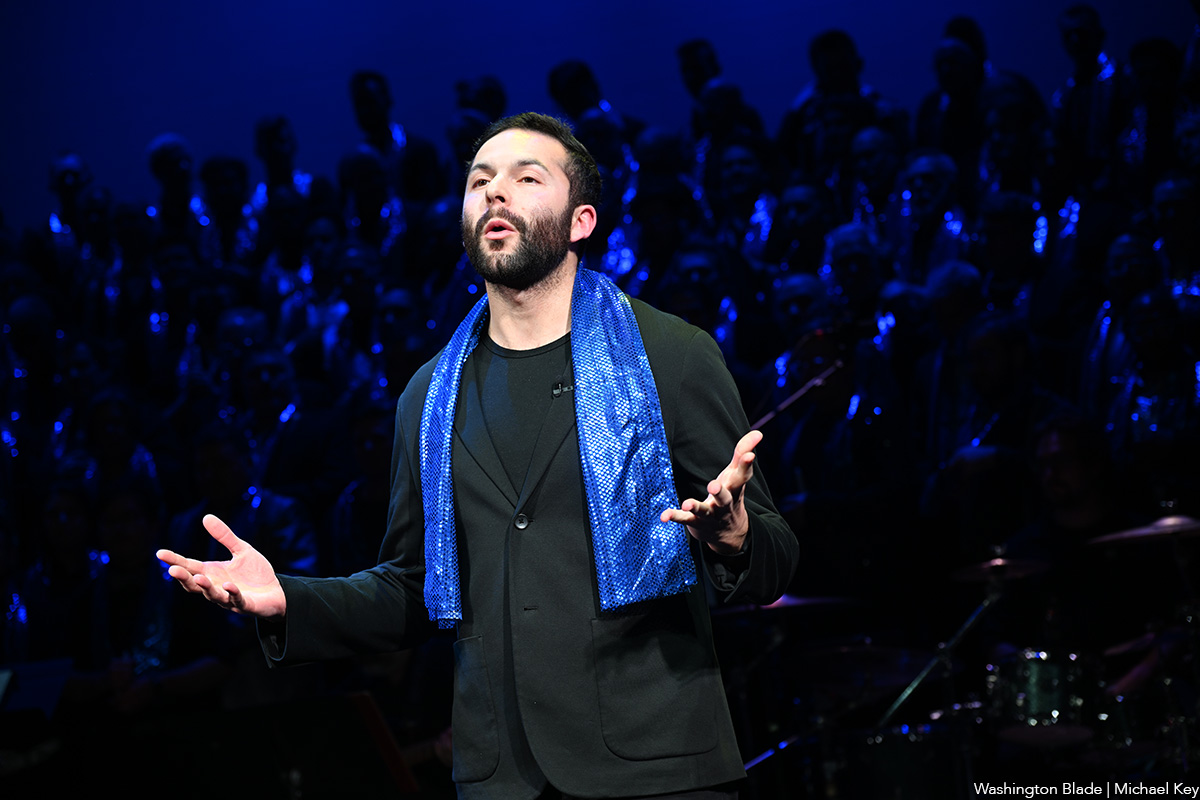
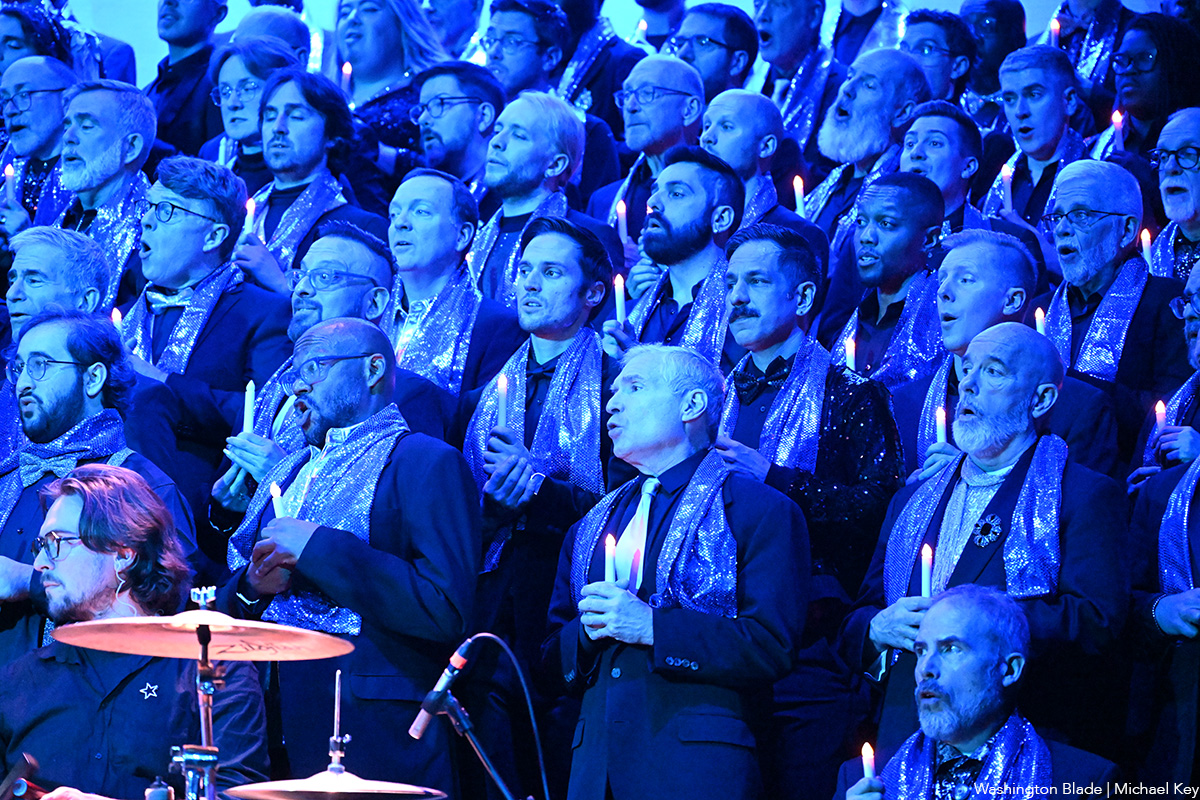
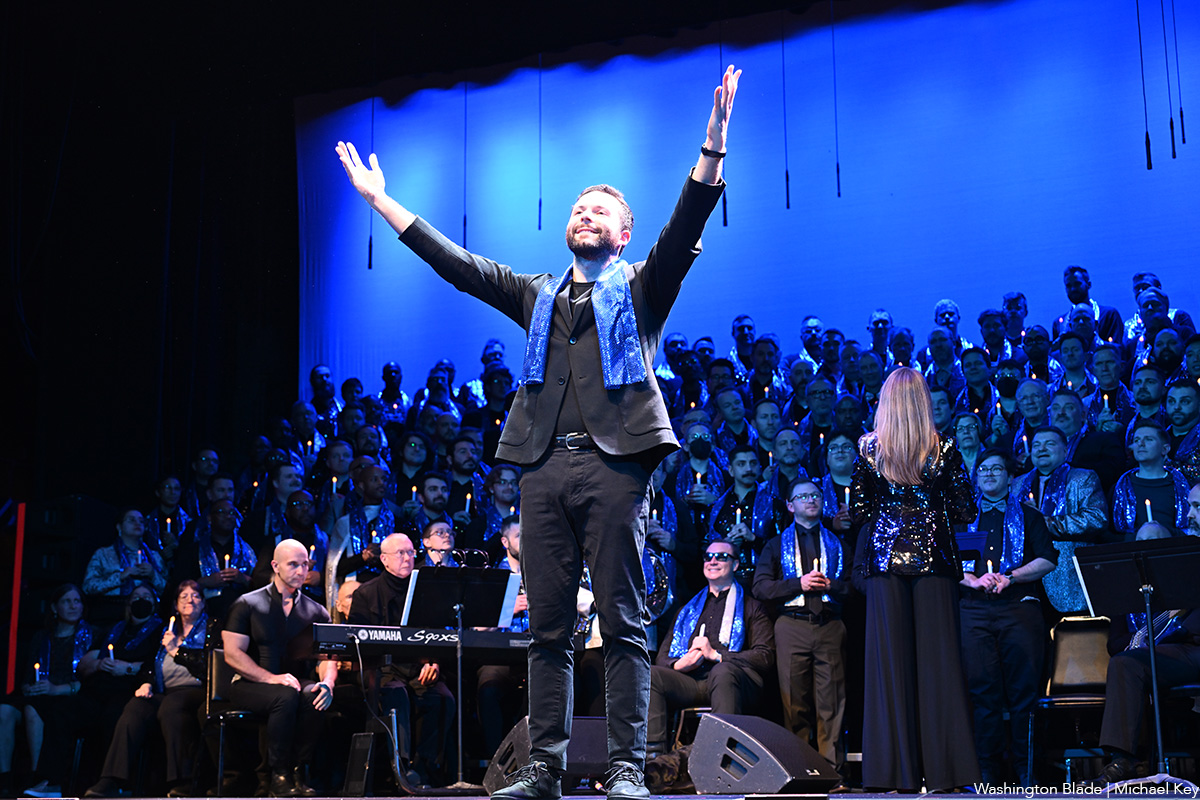


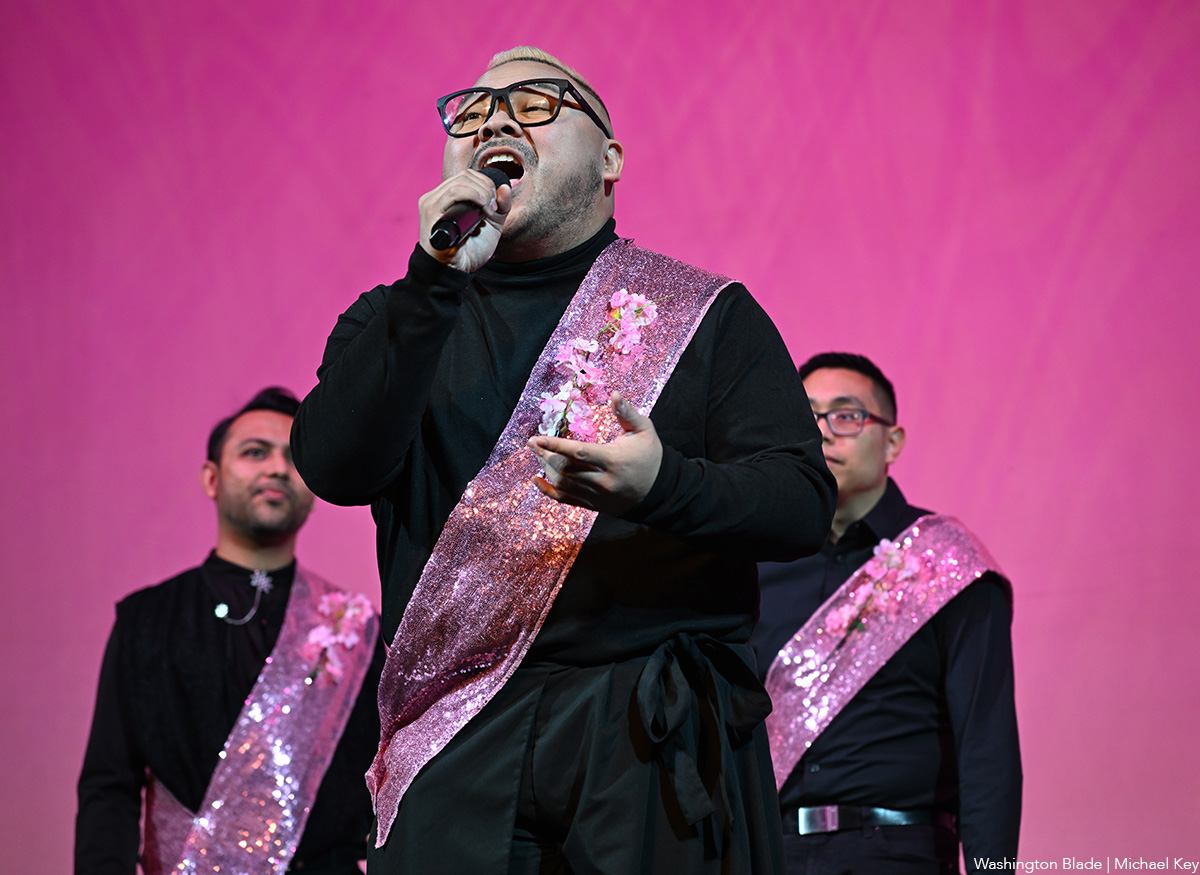

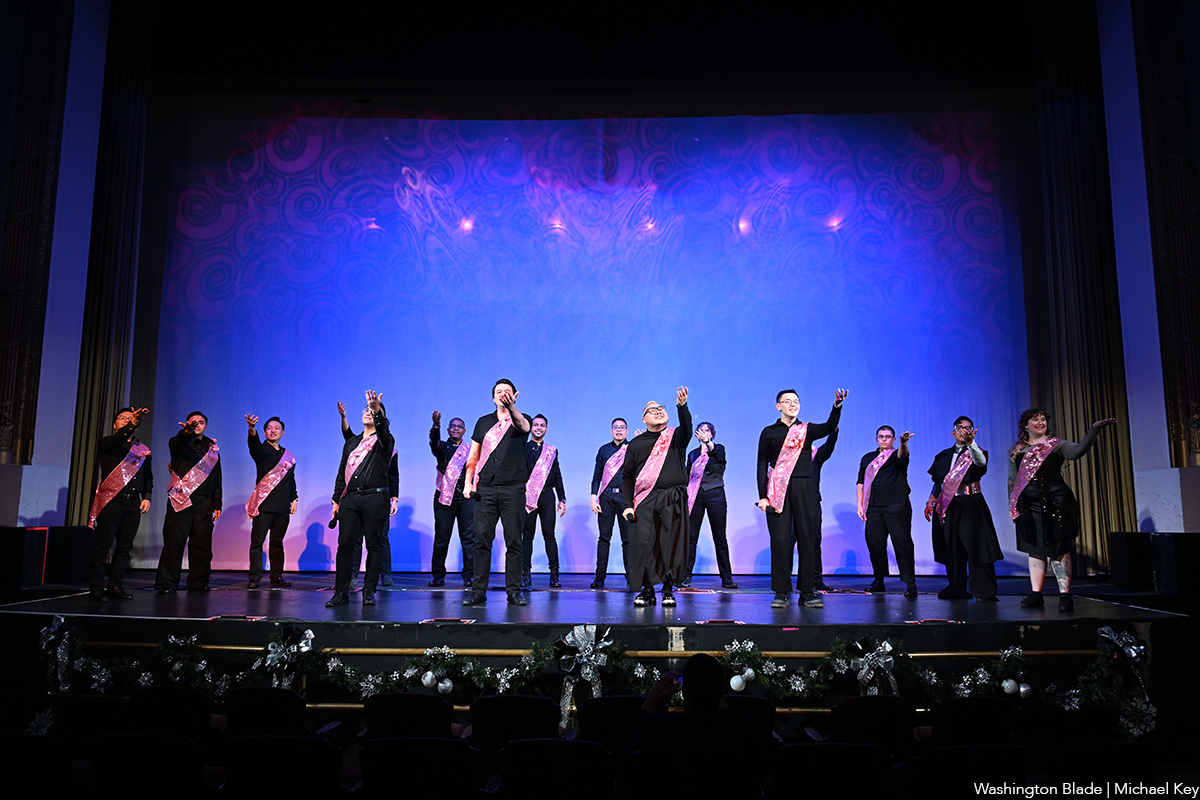
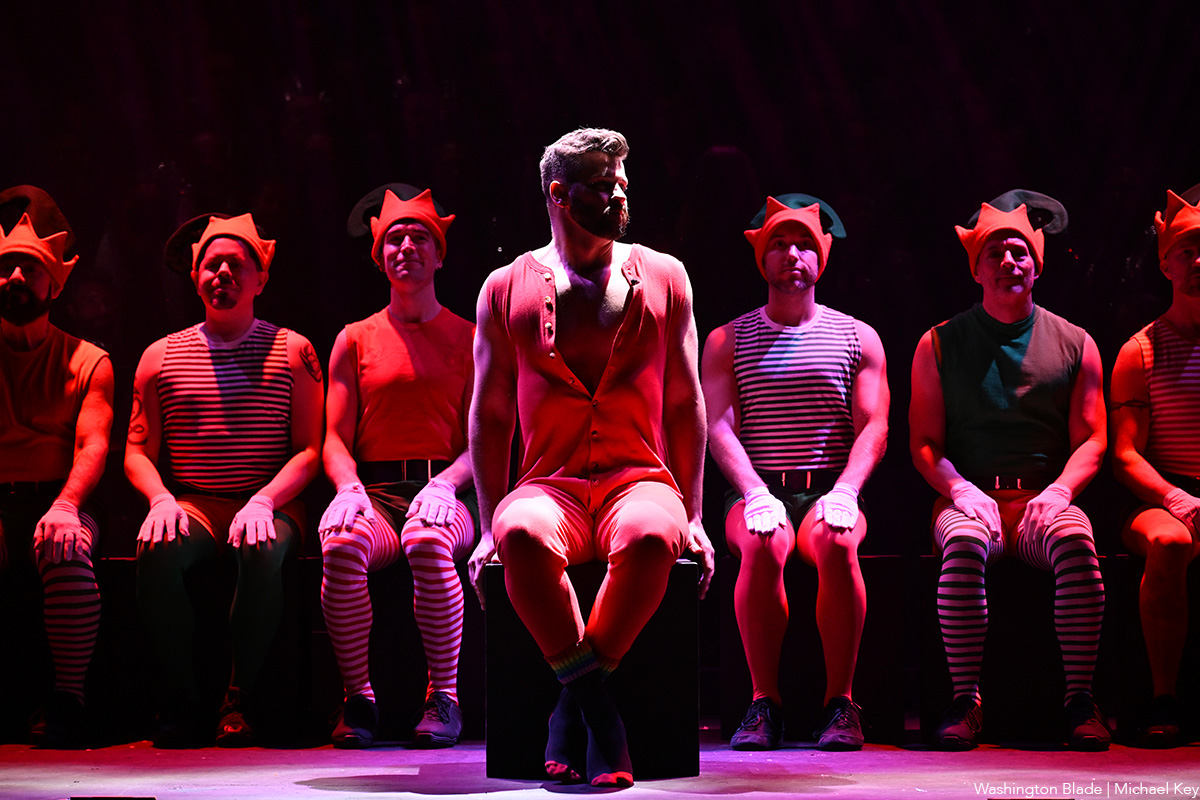

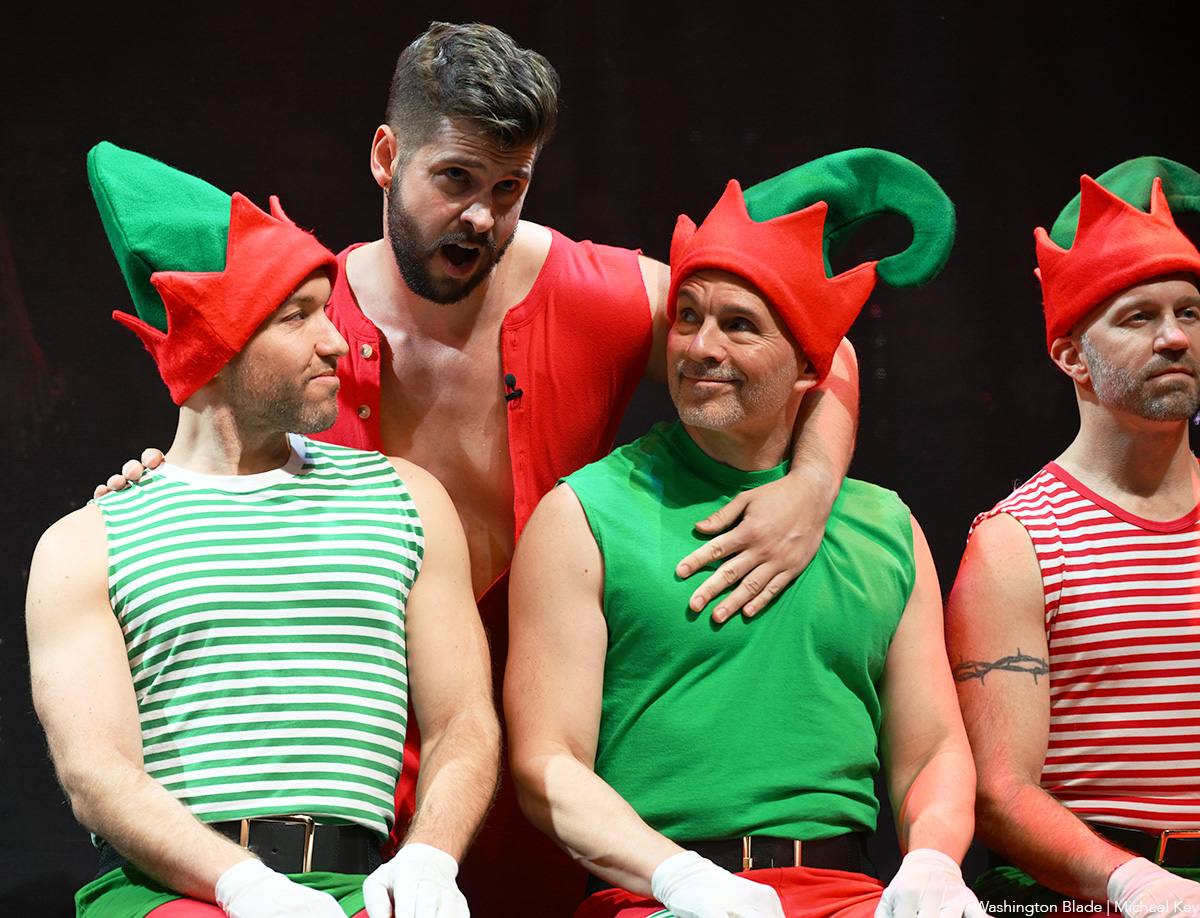

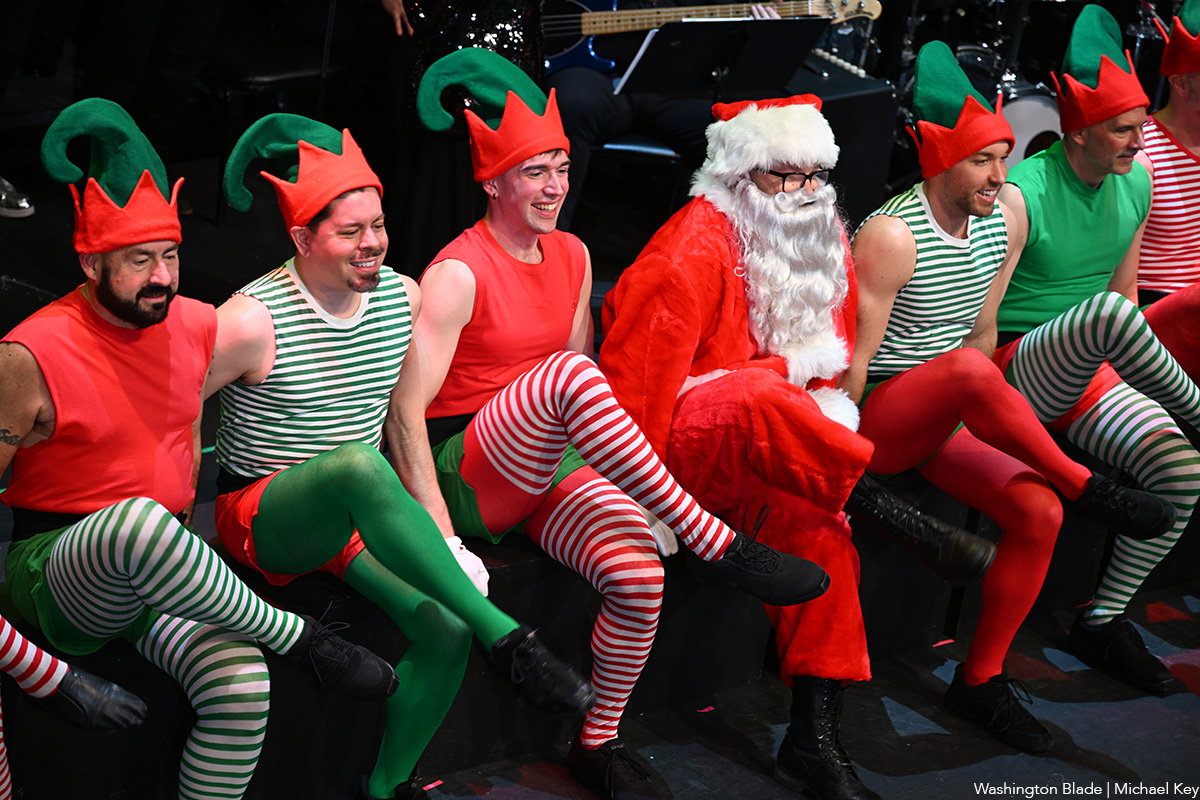
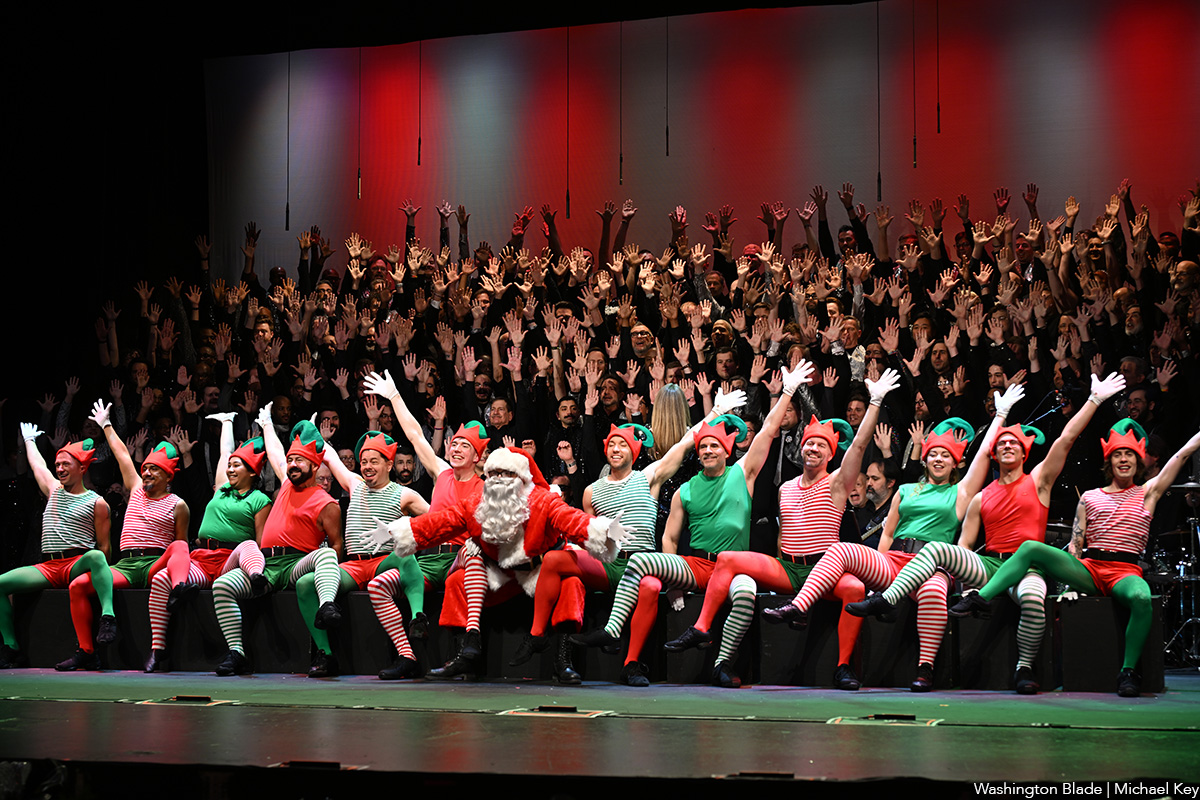

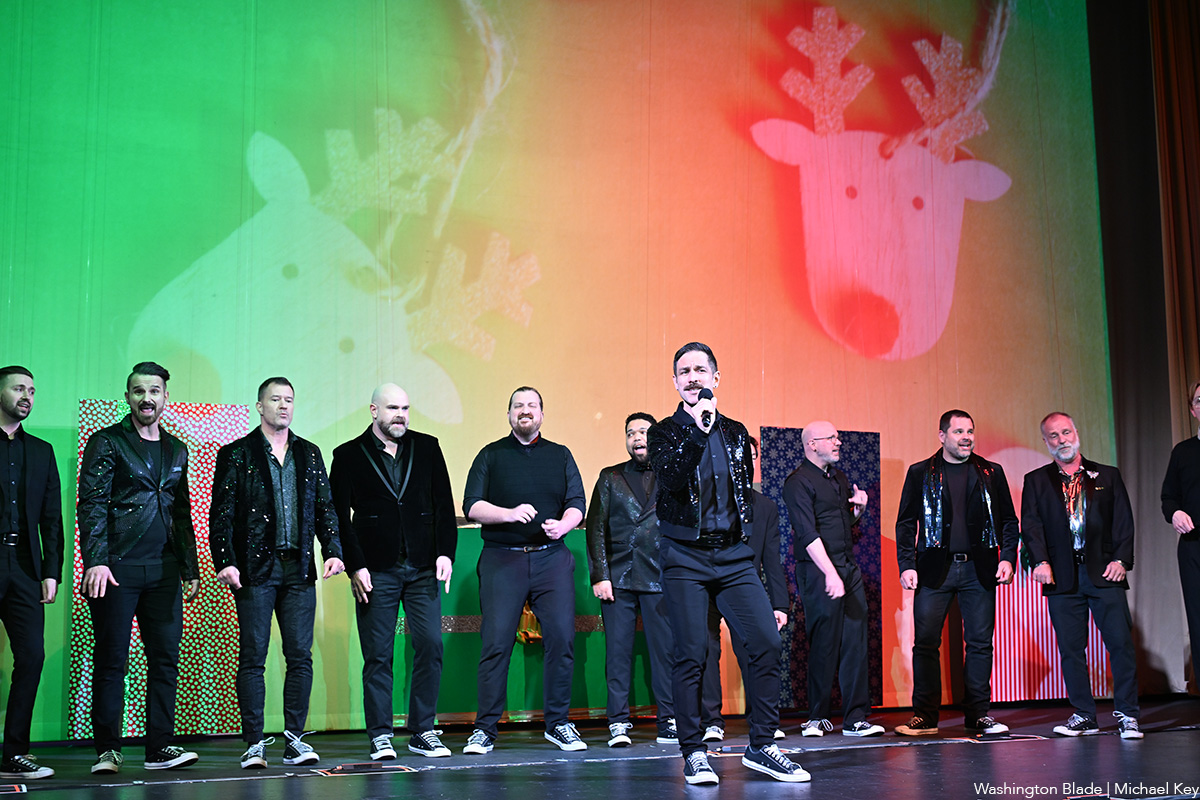
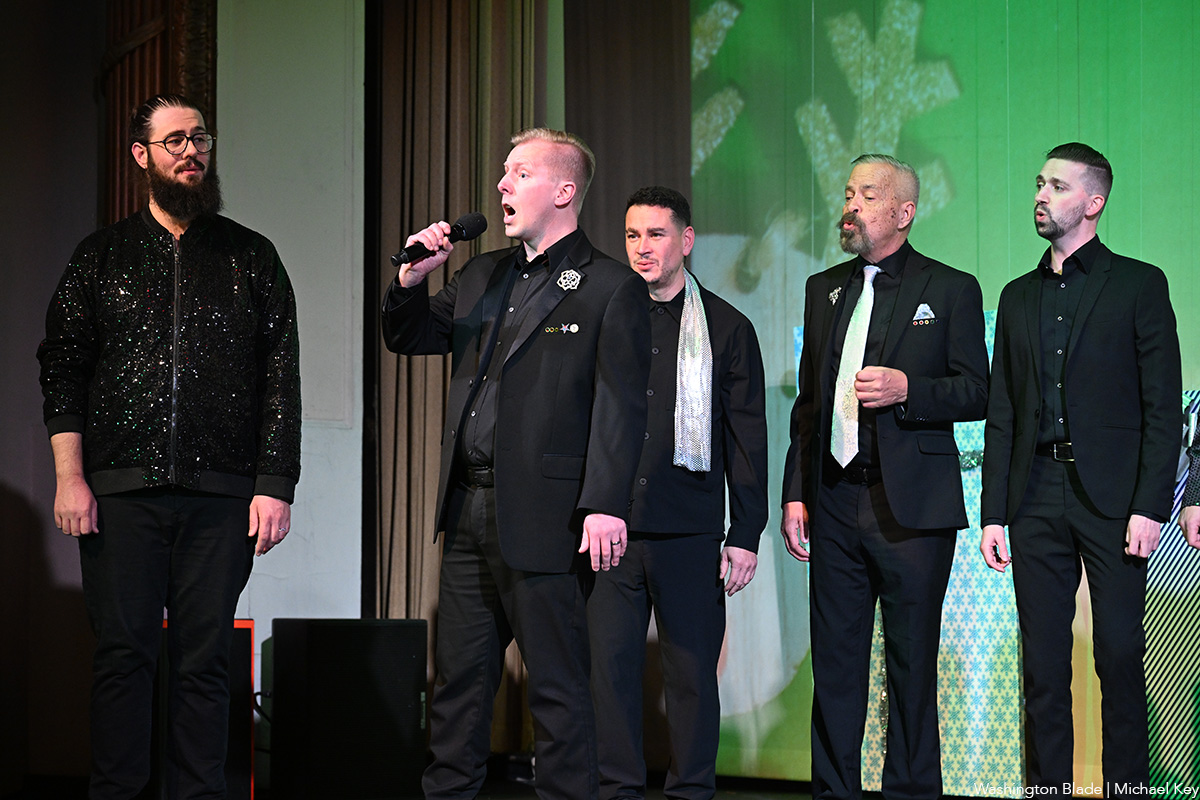
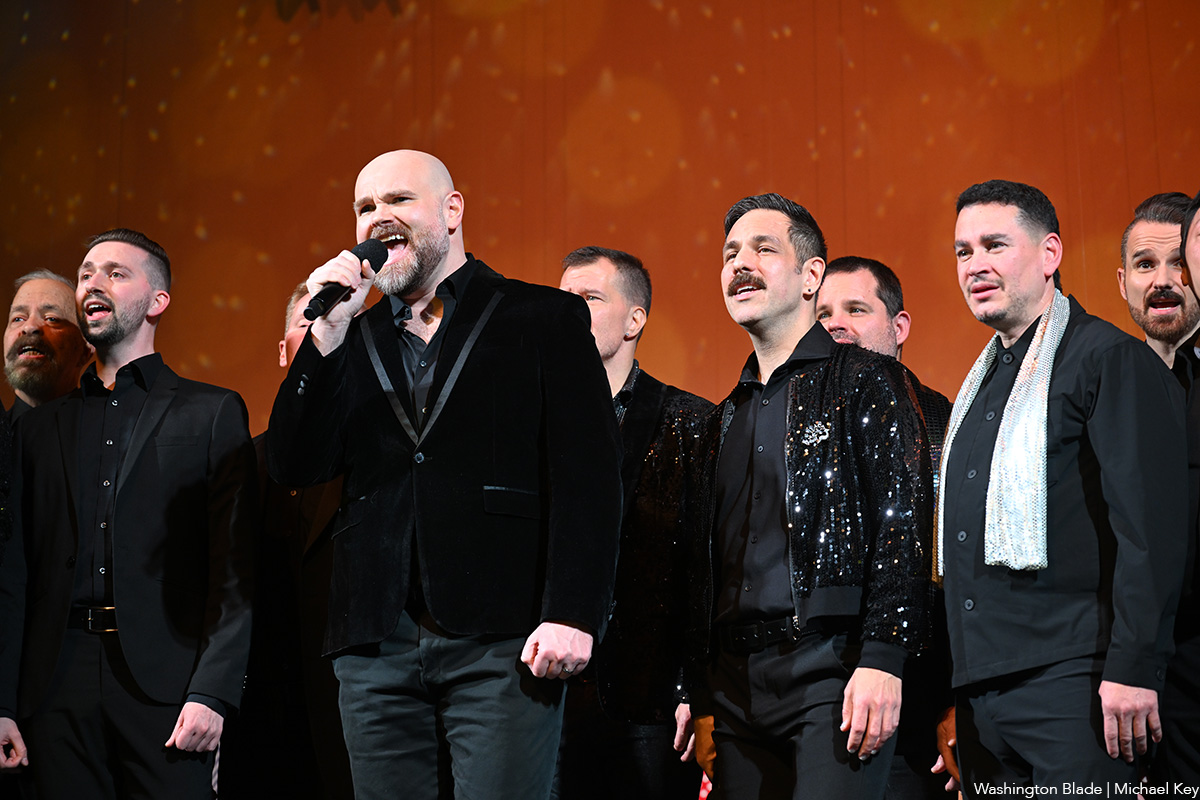
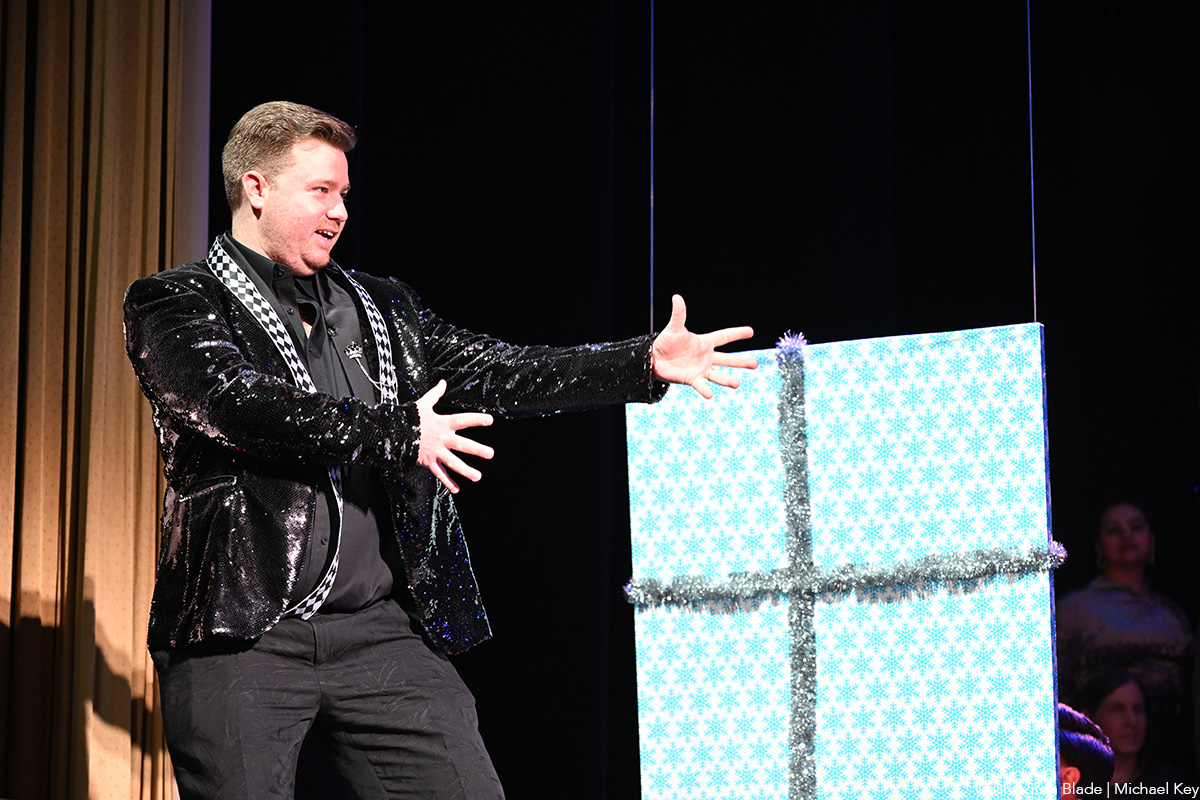
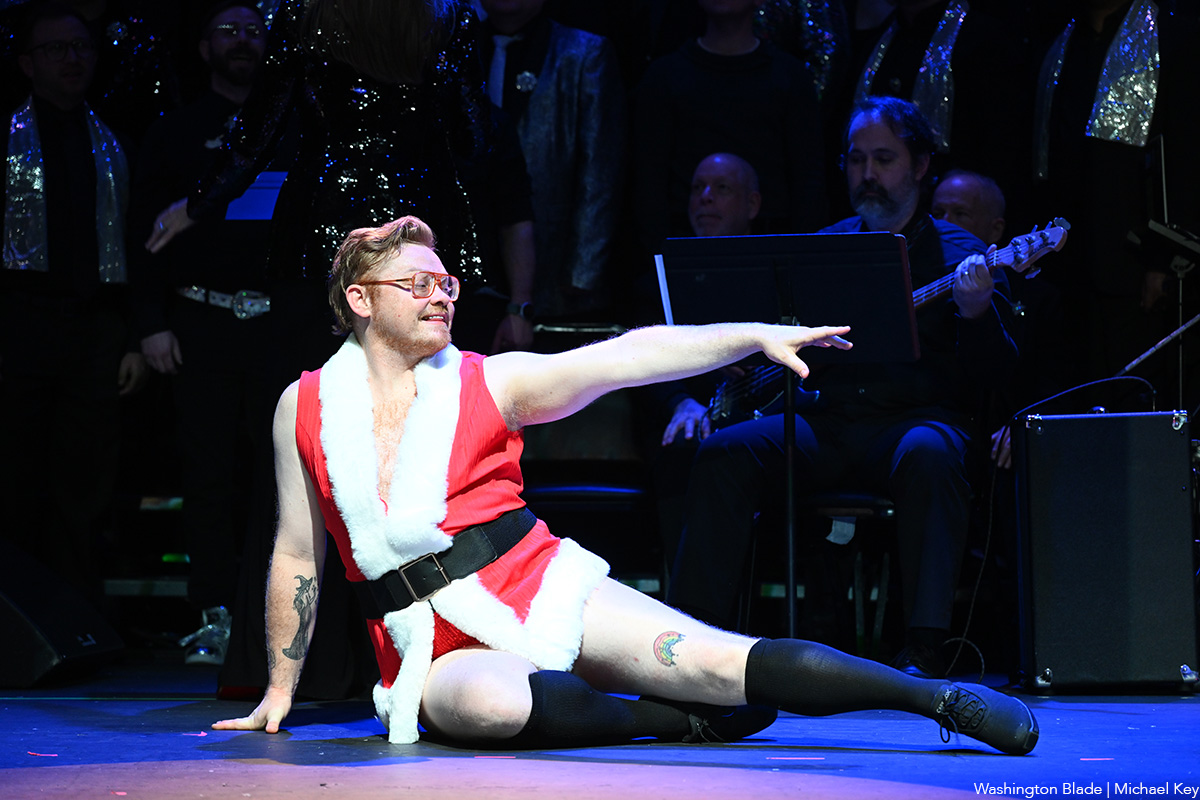
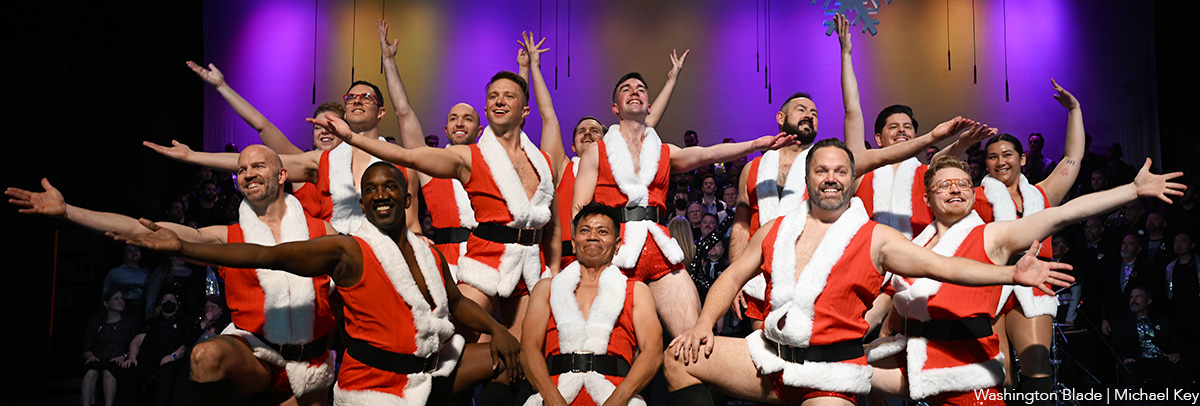
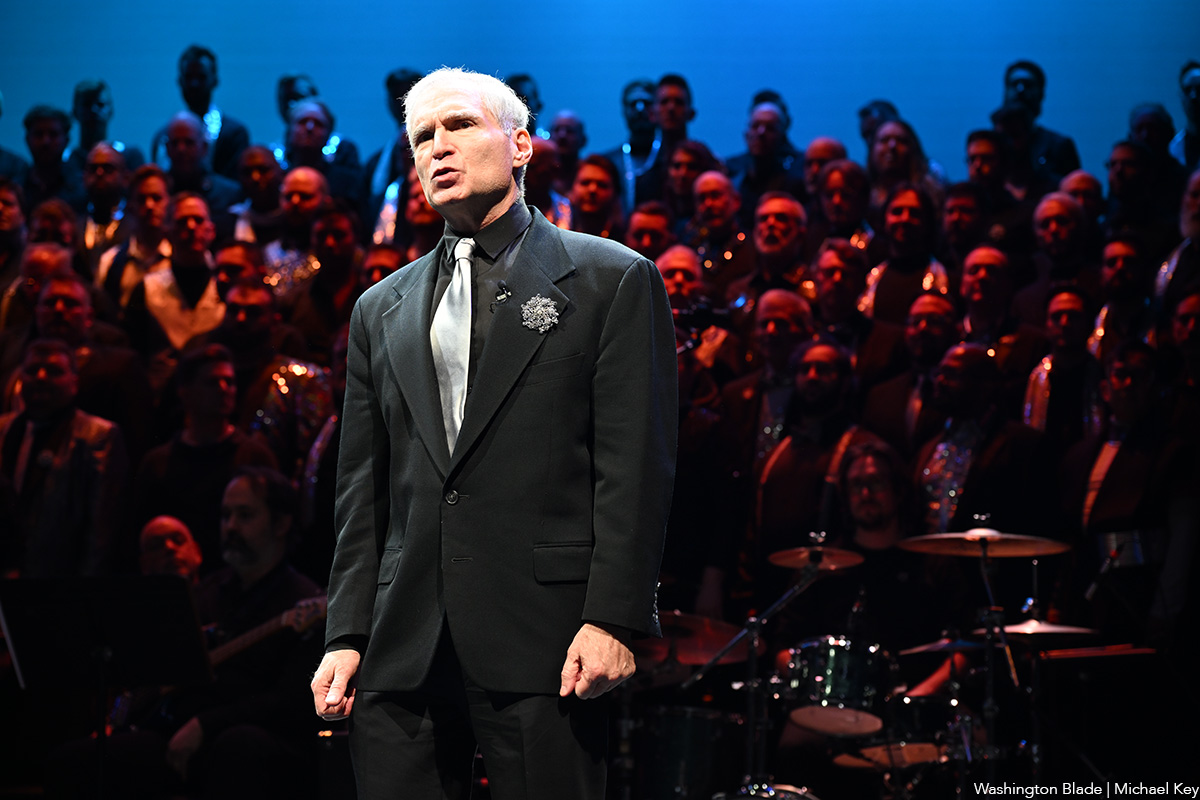


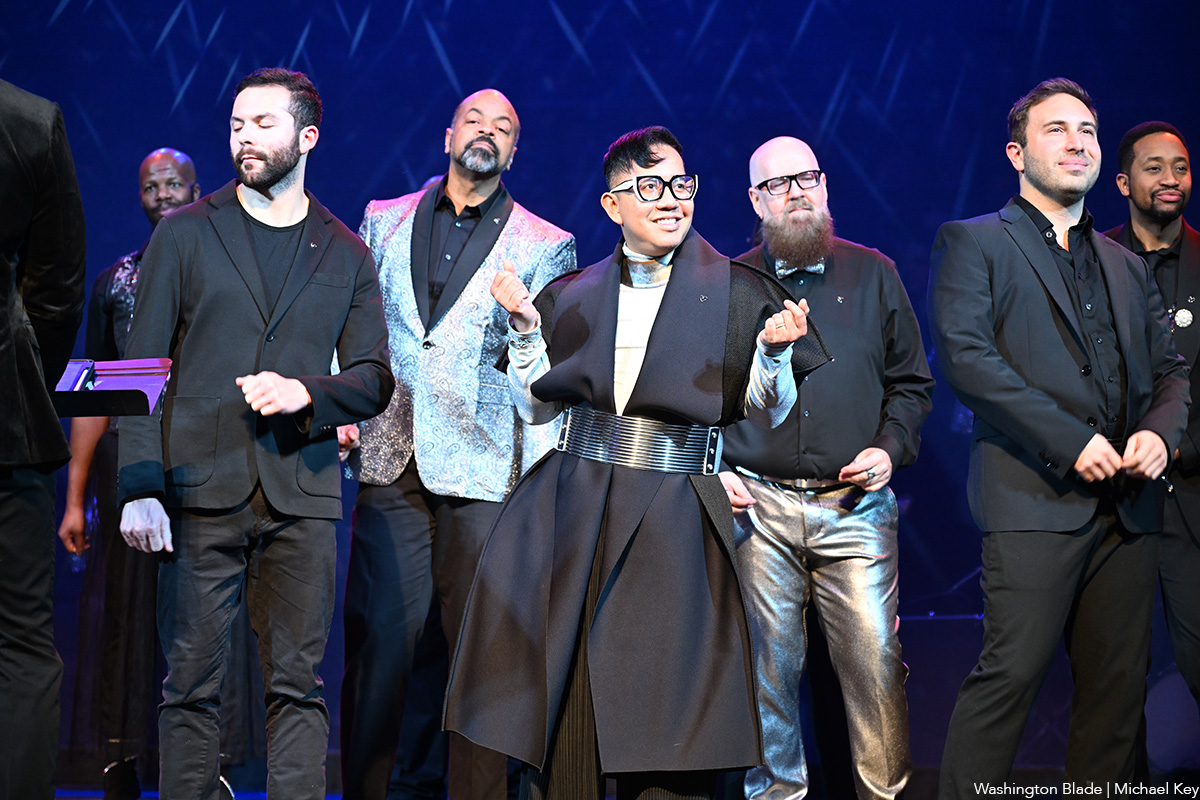


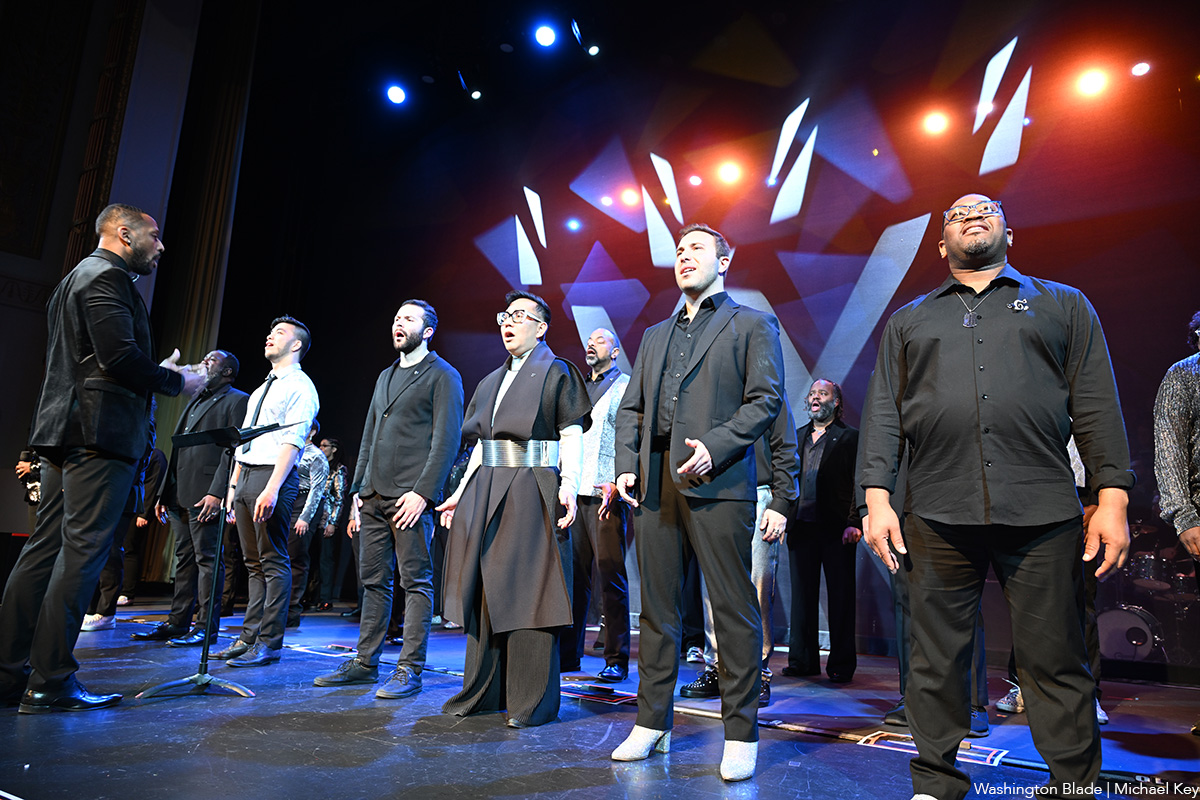


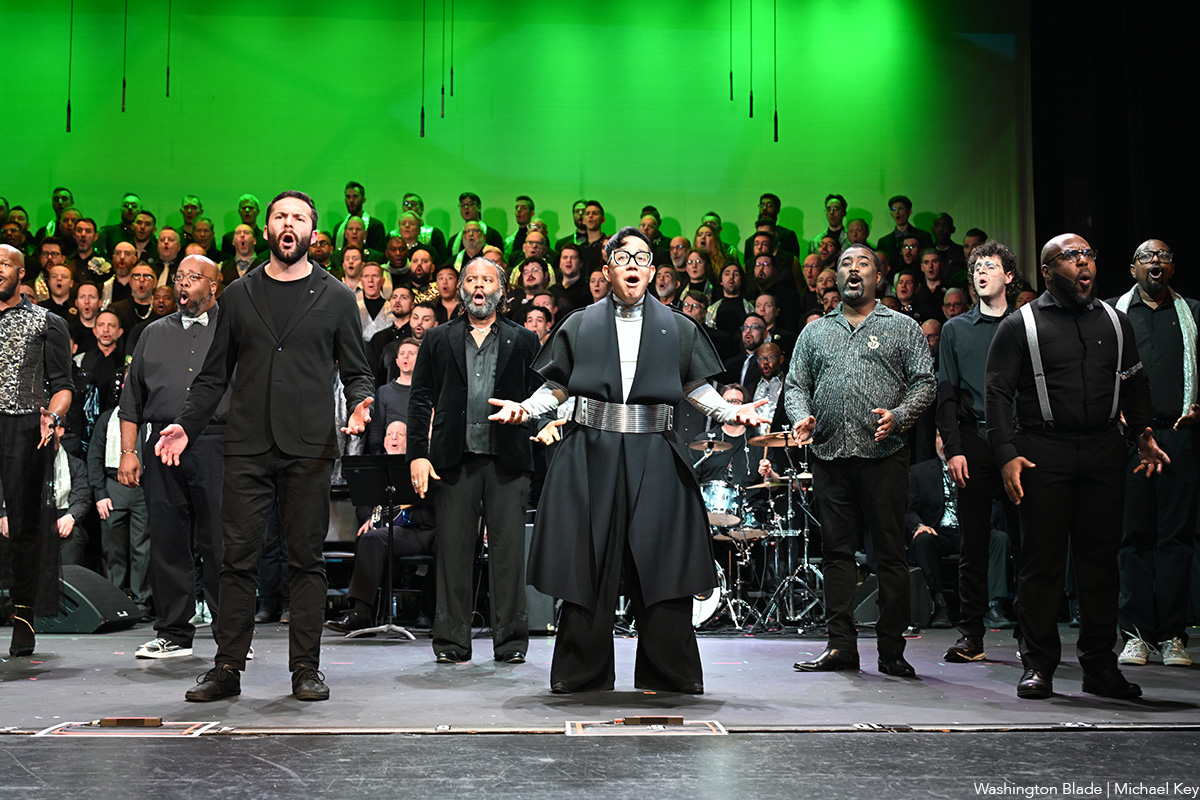
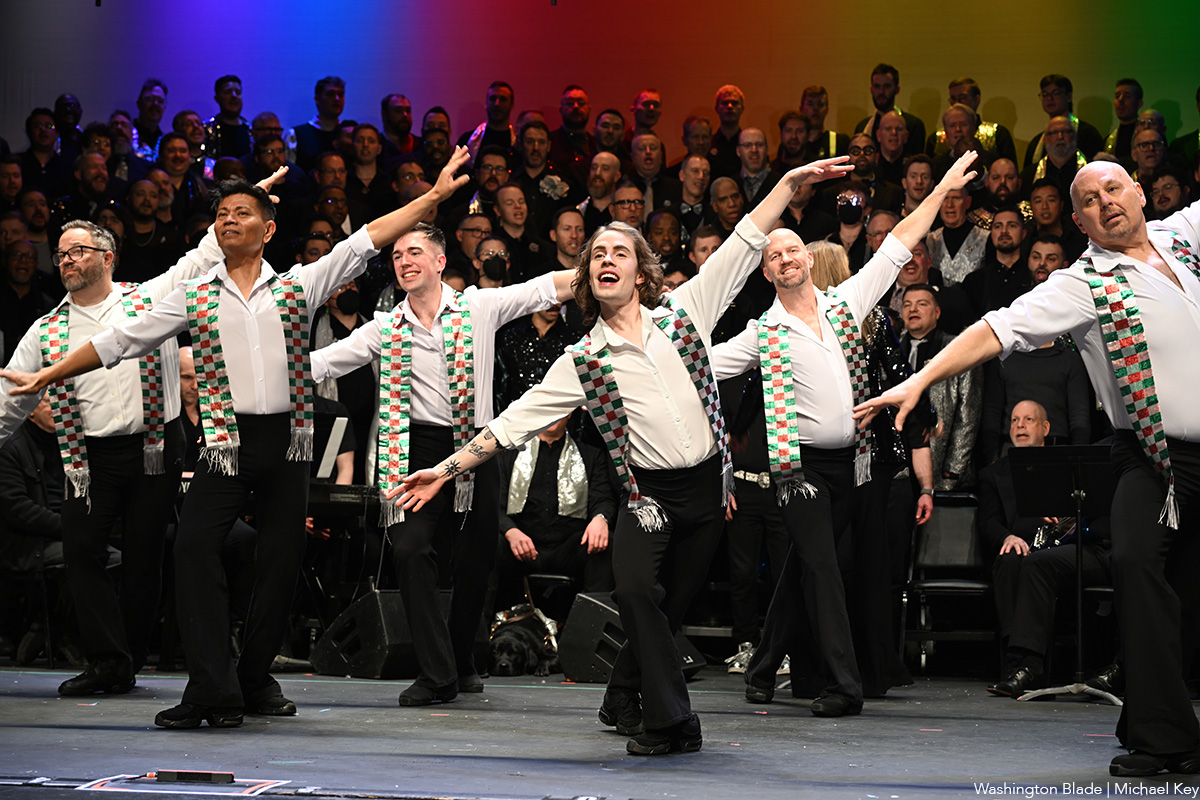

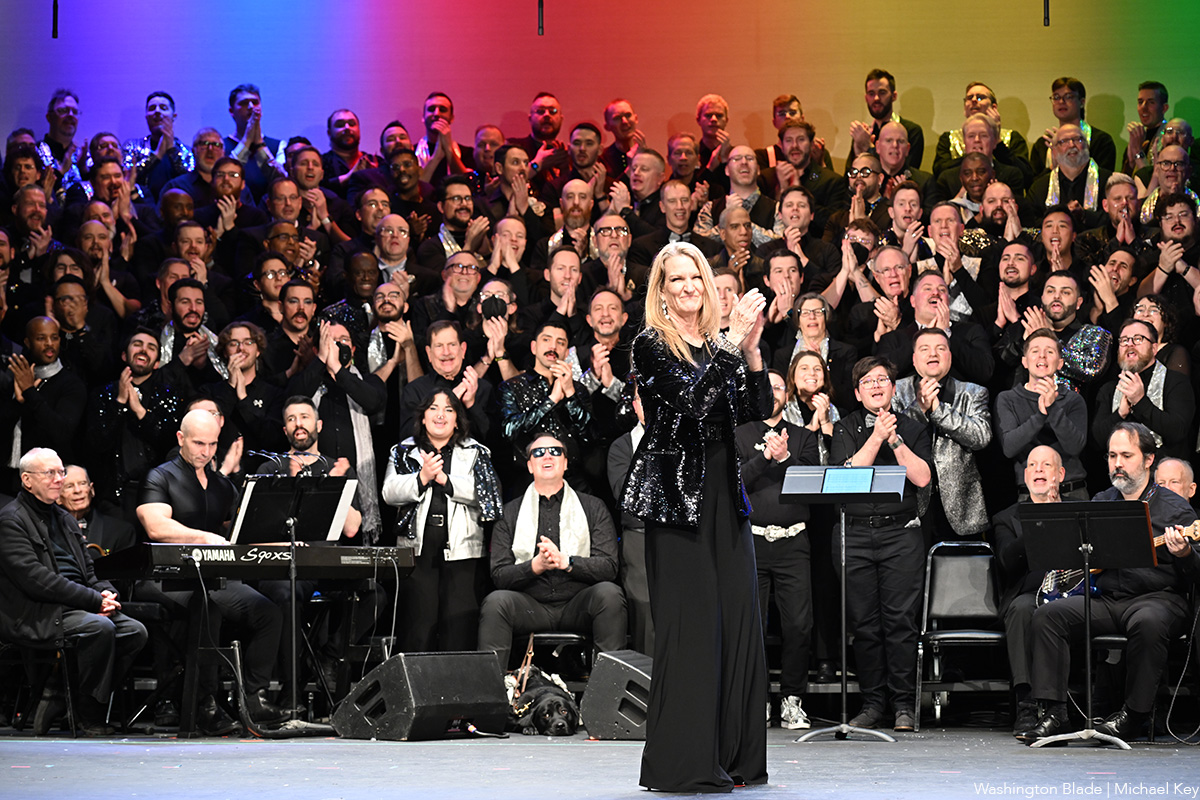
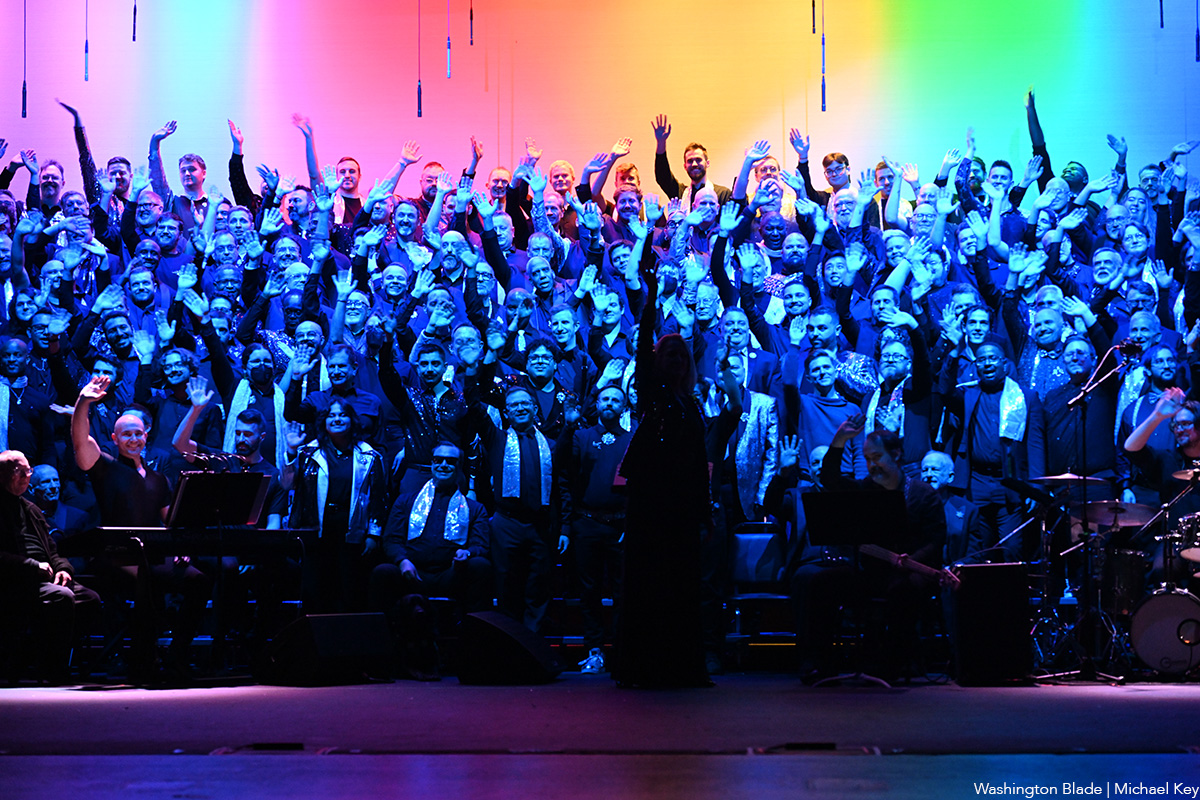

Santa will be very relieved.
You’ve taken most of the burden off him by making a list and checking it twice on his behalf. The gift-buying in your house is almost done – except for those few people who are just so darn hard to buy for. So what do you give to the person who has (almost) everything? You give them a good book, like maybe one of these.
Memoir and biography
The person who loves digging into a multi-level memoir will be happy unwrapping “Blessings and Disasters: A Story of Alabama” by Alexis Okeowo (Henry Holt). It’s a memoir about growing up Black in what was once practically ground zero for the Confederacy. It’s about inequality, it busts stereotypes, and yet it still oozes love of place. You can’t go wrong if you wrap it up with “Queen Mother: Black Nationalism, Reparations, and the Untold Story of Audley Moore” by Ashley D. Farmer (Pantheon). It’s a chunky book with a memoir with meaning and plenty of thought.
For the giftee on your list who loves to laugh, wrap up “In My Remaining Years” by Jean Grae (Flatiron Books). It’s part memoir, part comedy, a look back at the late-last-century, part how-did-you-get-to-middle-age-already? and all fun. Wrap it up with “Here We Go: Lessons for Living Fearlessly from Two Traveling Nanas” by Eleanor Hamby and Dr. Sandra Hazellip with Elisa Petrini (Viking). It’s about the adventures of two 80-something best friends who seize life by the horns – something your giftee should do, too.
If there’ll be someone at your holiday table who’s finally coming home this year, wrap up “How I Found Myself in the Midwest” by Steve Grove (Simon & Schuster). It’s the story of a Silicon Valley worker who gives up his job and moves with his family to Minnesota, which was once home to him. That was around the time the pandemic hit, George Floyd was murdered, and life in general had been thrown into chaos. How does someone reconcile what was with what is now? Pair it with “Homestand: Small Town Baseball and the Fight for the Soul of America” by Will Bardenwerper (Doubleday). It’s set in New York and but isn’t that small-town feel universal, no matter where it comes from?
Won’t the adventurer on your list be happy when they unwrap “I Live Underwater” by Max Gene Nohl (University of Wisconsin Press)? They will, when they realize that this book is by a former deep-sea diver, treasure hunter, and all-around daredevil who changed the way we look for things under water. Nohl died more than 60 years ago, but his never-before-published memoir is fresh and relevant and will be a fun read for the right person.
If celeb bios are your giftee’s thing, then look for “The Luckiest” by Kelly Cervantes (BenBella Books). It’s the Midwest-to-New-York-City story of an actress and her life, her marriage, and what she did when tragedy hit. Filled with grace, it’s a winner.
Your music lover won’t want to open any other gifts if you give “Only God Can Judge Me: The Many Lives of Tupac Shakur” by Jeff Pearlman (Mariner Books). It’s the story of the life, death, and everything in-between about this iconic performer, including the mythology that he left behind. Has it been three decades since Tupac died? It has, but your music lover never forgets. Wrap it up with “Point Blank (Quick Studies)” by Bob Dylan, text by Eddie Gorodetsky, Lucy Sante, and Jackie Hamilton (Simon & Schuster), a book of Dylan’s drawings and artwork. This is a very nice coffee-table size book that will be absolutely perfect for fans of the great singer and for folks who love art.
For the giftee who’s concerned with their fellow man, “The Lost and the Found: A True Story of Homelessness, Found Family and Second Chances” by Kevin Fagan (One Signal / Atria) may be the book to give. It’s a story of two “unhoused” people in San Francisco, one of the country’s wealthiest cities, and their struggles. There’s hope in this book, but also trouble and your giftee will love it.
For the person on your list who suffered loss this year, give “Pine Melody” by Stacey Meadows (Independently Published), a memoir of loss, grief, and healing while remembering the person gone.
LGBTQ fiction
For the mystery lover who wants something different, try “Crime Ink: Iconic,” edited by John Copenhaver and Salem West (Bywater Books), a collection of short stories inspired by “queer legends” and allies you know. Psychological thrillers, creepy crime, cozies, they’re here.
Novel lovers will want to curl up this winter with “Middle Spoon” by Alejandro Varela (Viking), a book about a man who appears to have it all, until his heart is broken and the fix for it is one he doesn’t quite understand and neither does anyone he loves.
LGBTQ studies – nonfiction
For the young man who’s struggling with issues of gender, “Before They Were Men” by Jacob Tobia (Harmony Books) might be a good gift this year. These essays on manhood in today’s world works to widen our conversations on the role politics and feminism play in understanding masculinity and how it’s time we open our minds.
If there’s someone on your gift list who had a tough growing-up (didn’t we all?), then wrap up “I’m Prancing as Fast as I Can” by Jon Kinnally (Permuted Press / Simon & Schuster). Kinnally was once an awkward kid but he grew up to be a writer for TV shows you’ll recognize. You can’t go wrong gifting a story like that. Better idea: wrap it up with “So Gay for You: Friendship, Found Family, & The Show That Started It All” by Leisha Hailey & Kate Moennig (St. Martin’s Press), a book about a little TV show that launched a BFF-ship.
Who doesn’t have a giftee who loves music? You sure do, so wrap up “The Secret Public: How Music Moved Queer Culture from the Margins to the Mainstream” by Jon Savage (Liveright). Nobody has to tell your giftee that queer folk left their mark on music, but they’ll love reading the stories in this book and knowing what they didn’t know.
The Blade may receive commissions from qualifying purchases made via this post.
Theater
Studio’s ‘Mother Play’ draws from lesbian playwright’s past
A poignant memory piece laced with sadness and wry laughs
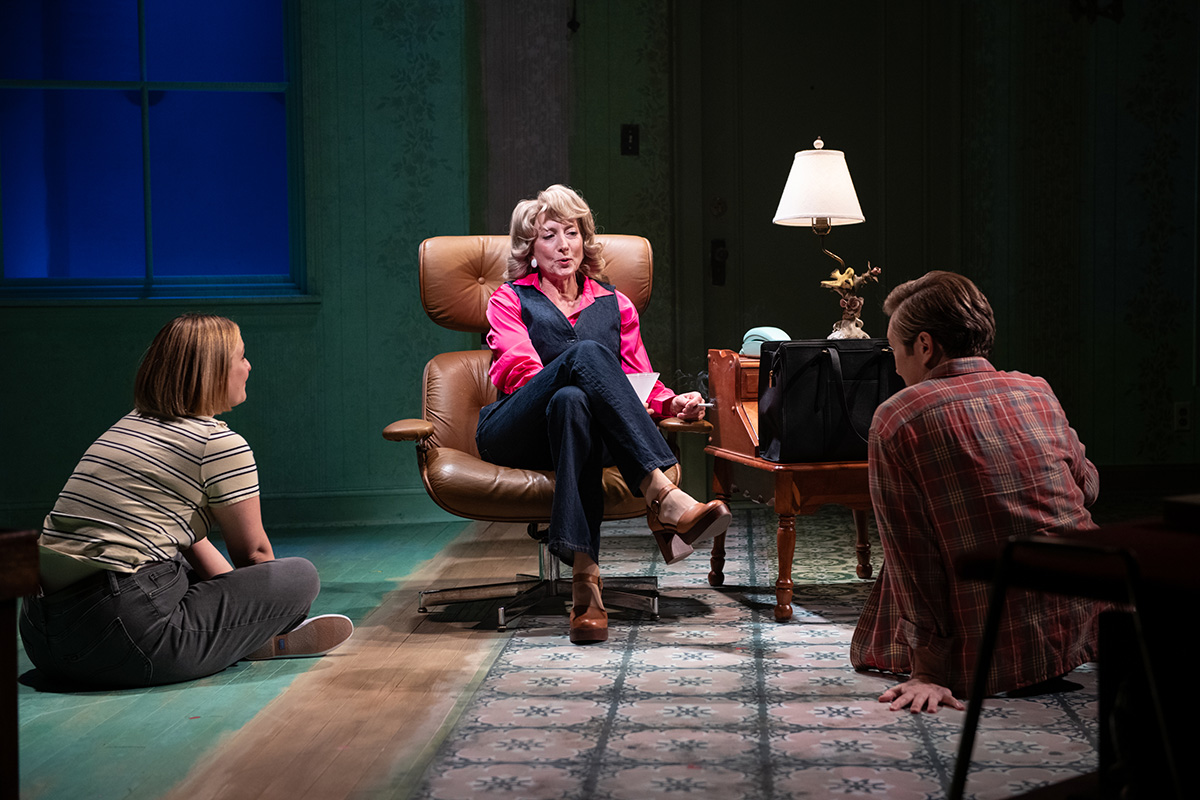
‘The Mother Play’
Through Jan. 4
Studio Theatre
1501 14th St., N.W.
$42 – $112
Studiotheatre.org
“The Mother Play” isn’t the first work by Pulitzer Prize-winning lesbian playwright Paula Vogel that draws from her past. It’s just the most recent.
Currently enjoying an extended run at Studio Theatre, “The Mother Play,” (also known as “The Mother Play: A Play in Five Evictions,” or more simply, “Mother Play”) is a 90-minute powerful and poignant memory piece laced with sadness and wry laughs.
The mother in question is Phyllis Herman (played exquisitely by Kate Eastwood Norris), a divorced government secretary bringing up two children under difficult circumstances. When we meet them it’s 1964 and the family is living in a depressing subterranean apartment adjacent to the building’s trash room.
Phyllis isn’t exactly cut out for single motherhood; an alcoholic chain-smoker with two gay offspring, Carl and Martha, both in their early teens, she seems beyond her depth.
In spite (or because of) the challenges, things are never dull in the Herman home. Phyllis is warring with landlords, drinking, or involved in some other domestic intrigue. At the same time, Carl is glued to books by authors like Jane Austen, and queer novelist Lytton Strachey, while Martha is charged with topping off mother’s drinks, not a mean feat.
Despite having an emotionally and physically withholding parent, adolescent Martha is finding her way. Fortunately, she has nurturing older brother Carl (the excellent Stanley Bahorek) who introduces her to queer classics like “The Well of Loneliness” by Radclyffe Hall, and encourages Martha to pursue lofty learning goals.
Zoe Mann’s Martha is just how you might imagine the young Vogel – bright, searching, and a tad awkward.
As the play moves through the decades, Martha becomes an increasingly confident young lesbian before sliding comfortably into early middle age. Over time, her attitude toward her mother becomes more sympathetic. It’s a convincing and pleasing performance.
Phyllis is big on appearances, mainly her own. She has good taste and a sharp eye for thrift store and Goodwill finds including Chanel or a Von Furstenberg wrap dress (which looks smashing on Eastwood Norris, by the way), crowned with the blonde wig of the moment.
Time and place figure heavily into Vogel’s play. The setting is specific: “A series of apartments in Prince George’s and Montgomery County from 1964 to the 21st century, from subbasement custodial units that would now be Section 8 housing to 3-bedroom units.”
Krit Robinson’s cunning set allows for quick costume and prop changes as decades seamlessly move from one to the next. And if by magic, projection designer Shawn Boyle periodically covers the walls with scurrying roaches, a persistent problem for these renters.
Margot Bordelon directs with sensitivity and nuance. Her take on Vogel’s tragicomedy hits all the marks.
Near the play’s end, there’s a scene sometimes referred to as “The Phyllis Ballet.” Here, mother sits onstage silently in front of her dressing table mirror. She is removed of artifice and oozes a mixture of vulnerability but not without some strength. It’s longish for a wordless scene, but Bordelon has paced it perfectly.
When Martha arranges a night of family fun with mom and now out and proud brother at Lost and Found (the legendary D.C. gay disco), the plan backfires spectacularly. Not long after, Phyllis’ desire for outside approval resurfaces tenfold, evidenced by extreme discomfort when Carl, her favorite child, becomes visibly ill with HIV/AIDS symptoms.
Other semi-autobiographical plays from the DMV native’s oeuvre include “The Baltimore Waltz,” a darkly funny, yet moving piece written in memory of her brother (Carl Vogel), who died of AIDS in 1988. The playwright additionally wrote “How I Learned to Drive,” an acclaimed play heavily inspired by her own experiences with sexual abuse as a teenager.
“The Mother Play” made its debut on Broadway in 2024, featuring Jessica Lange in the eponymous role, earning her a Tony Award nomination.
Like other real-life matriarch inspired characters (Mary Tyrone, Amanda Wingfield, Violet Weston to name a few) Phyllis Herman seems poised to join that pantheon of complicated, women.





